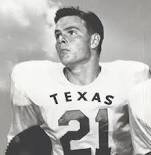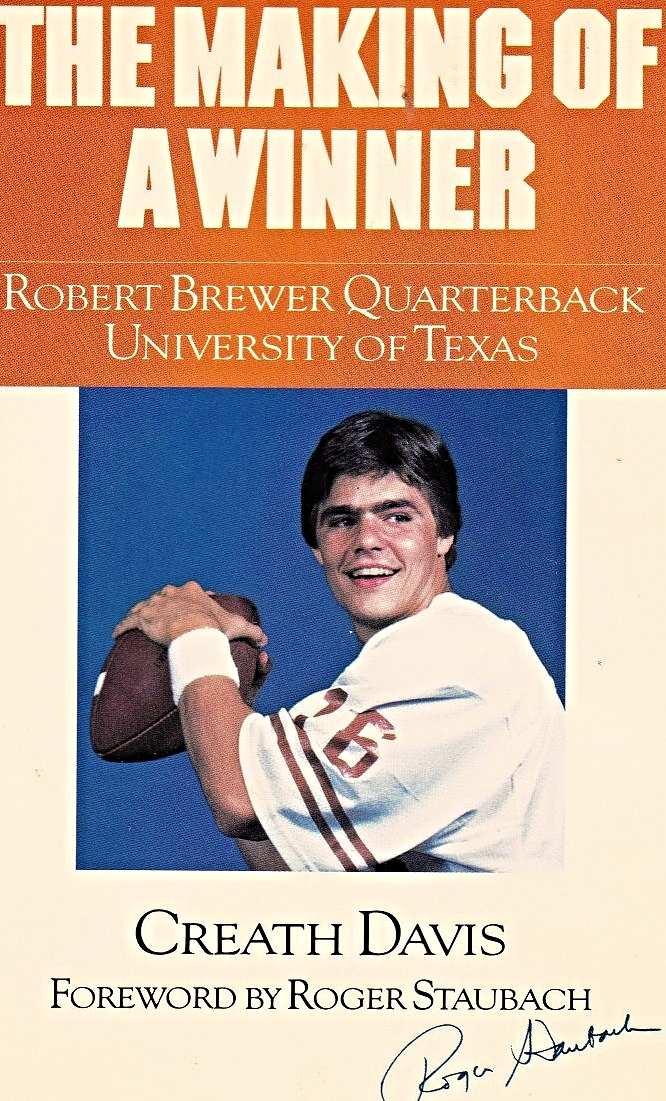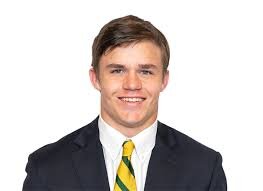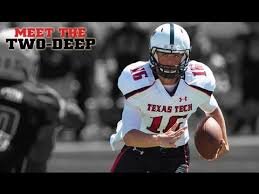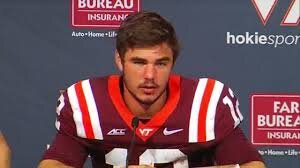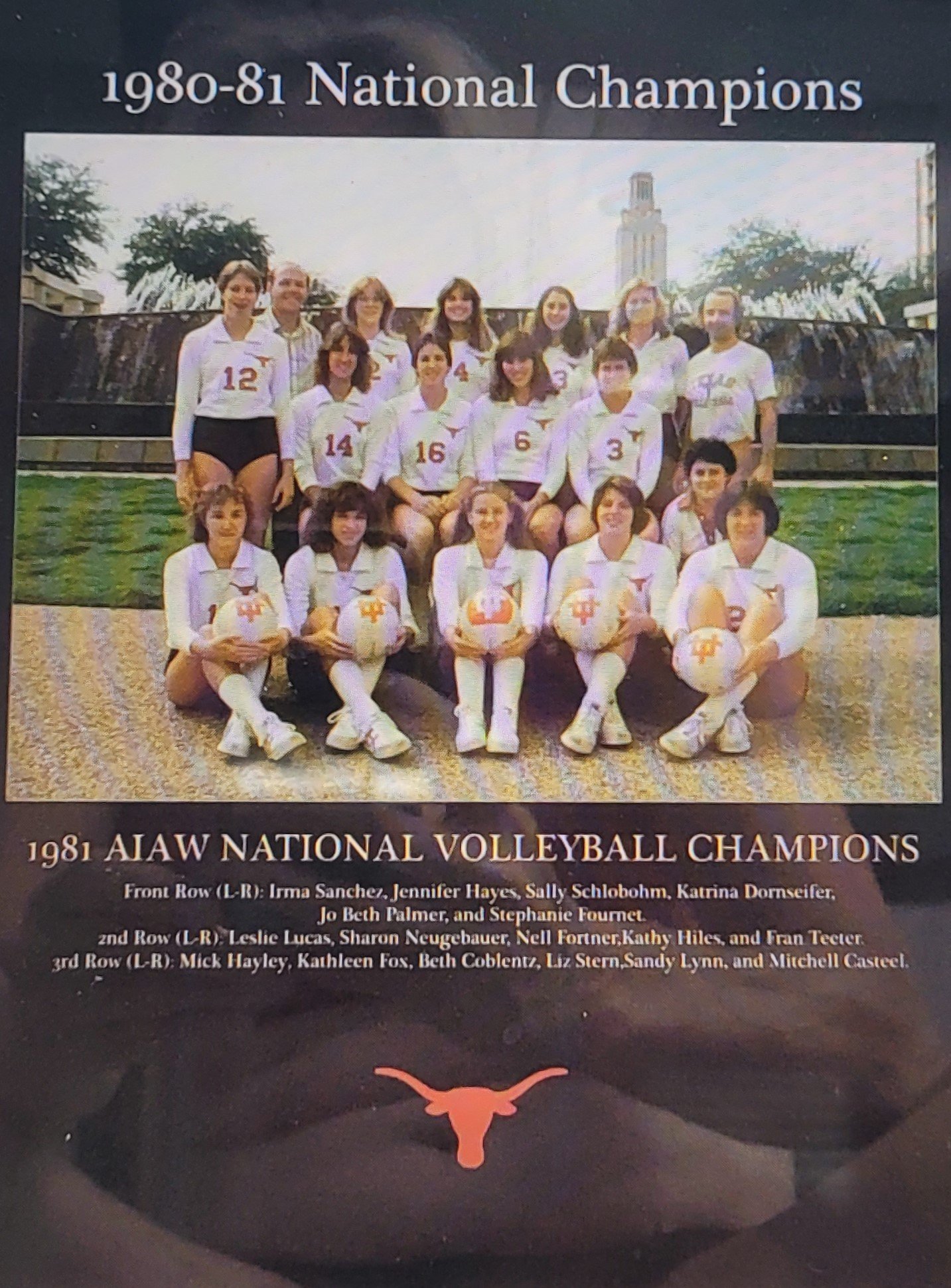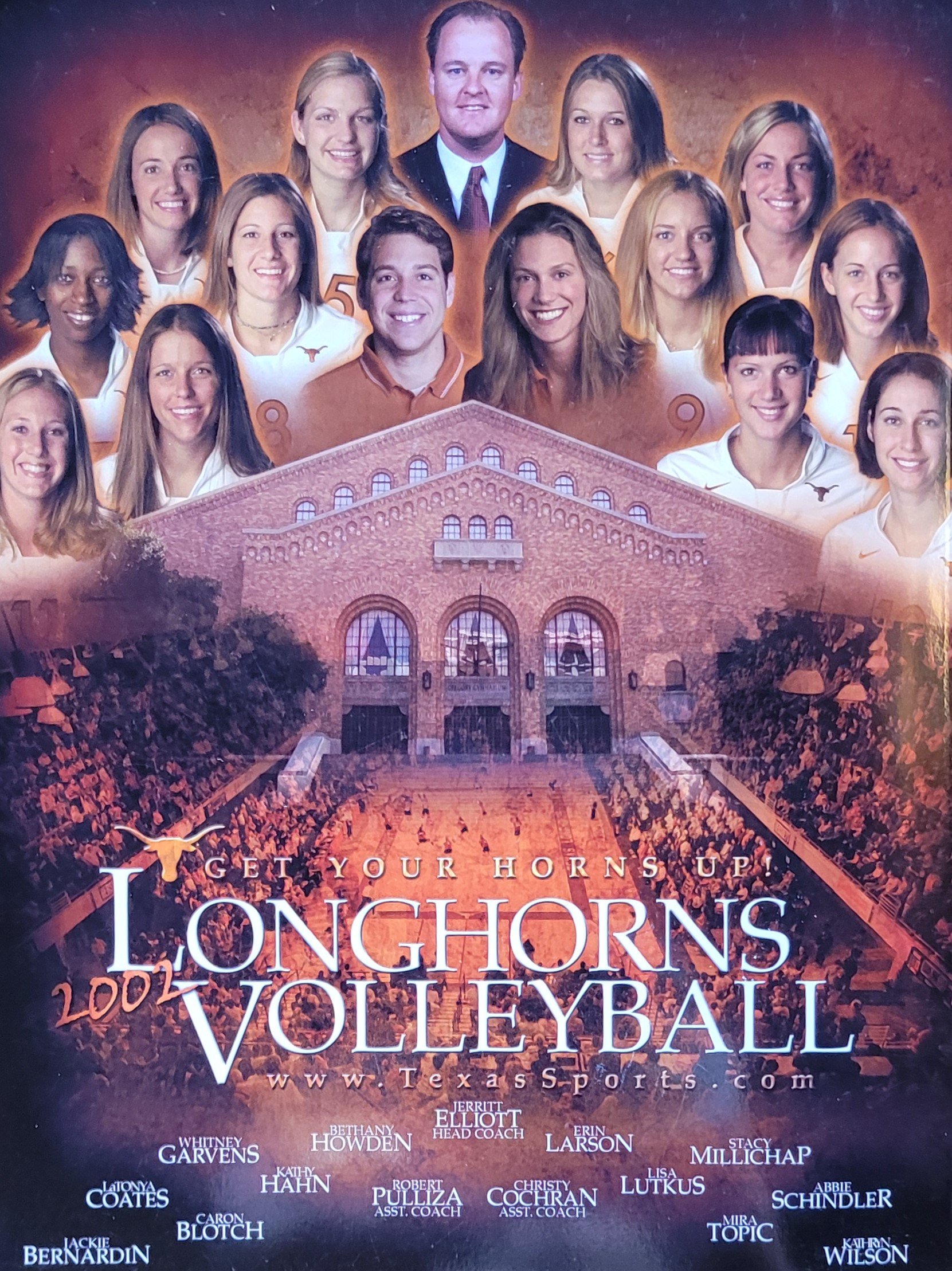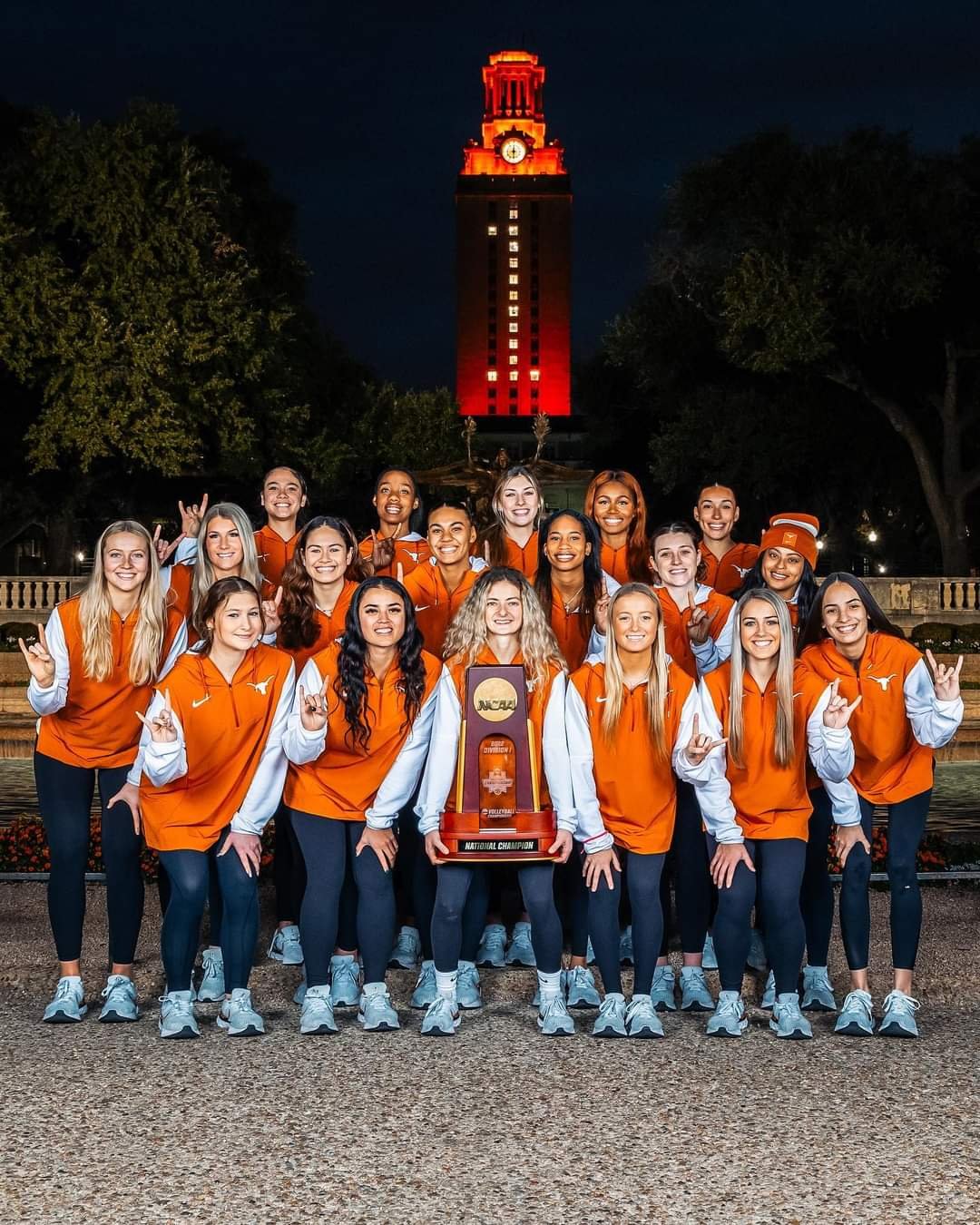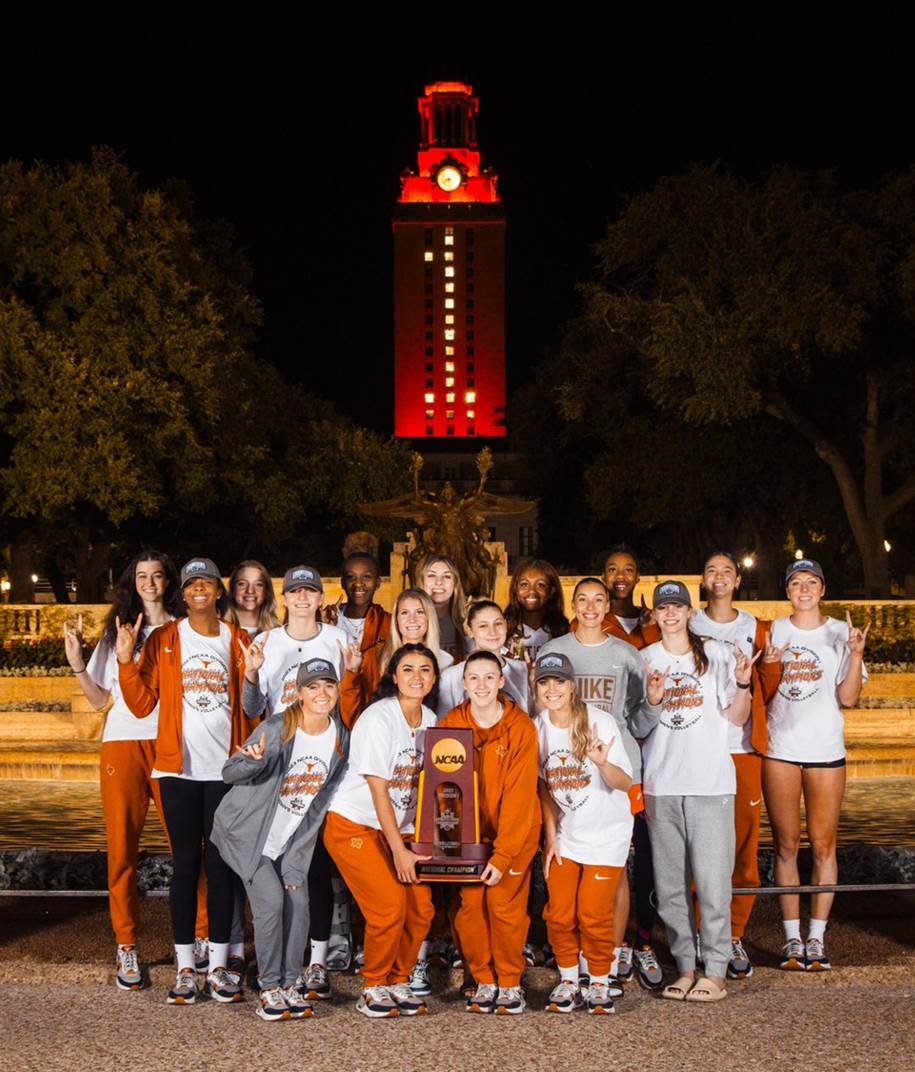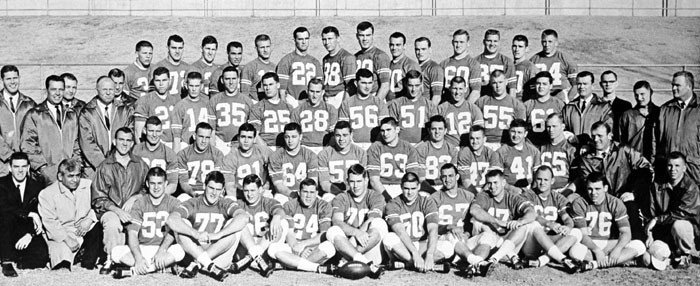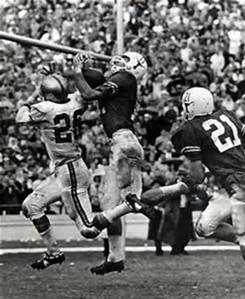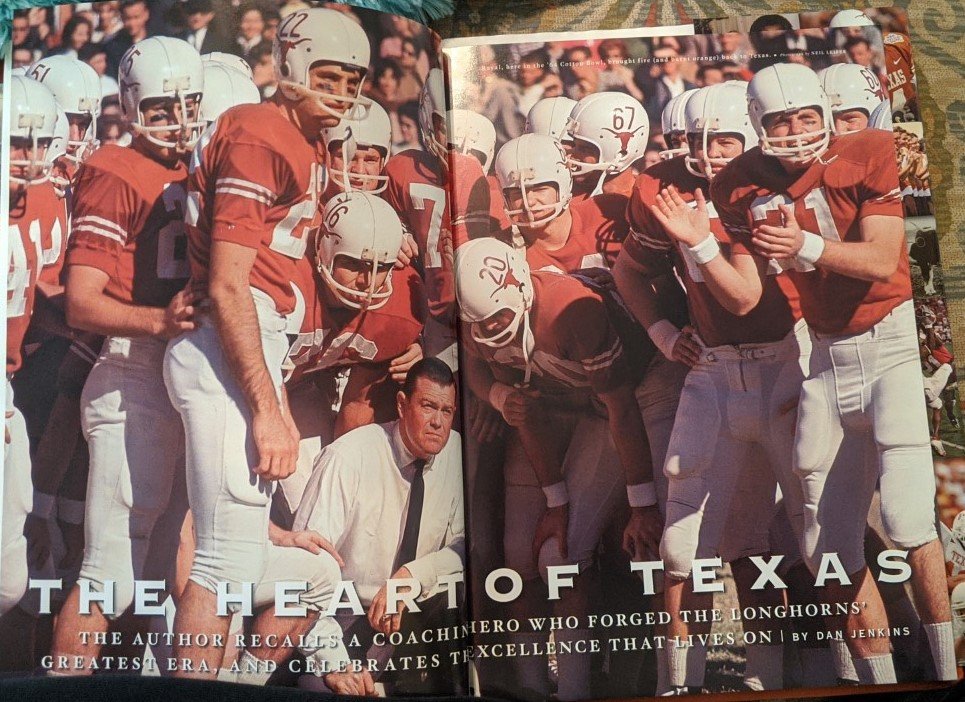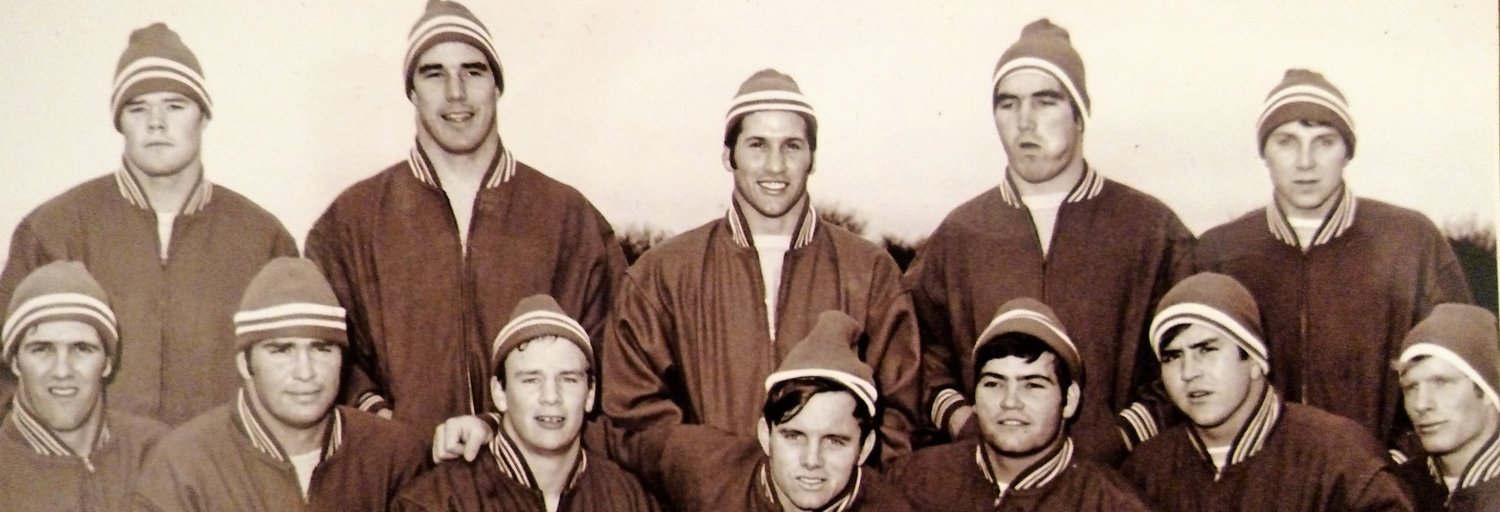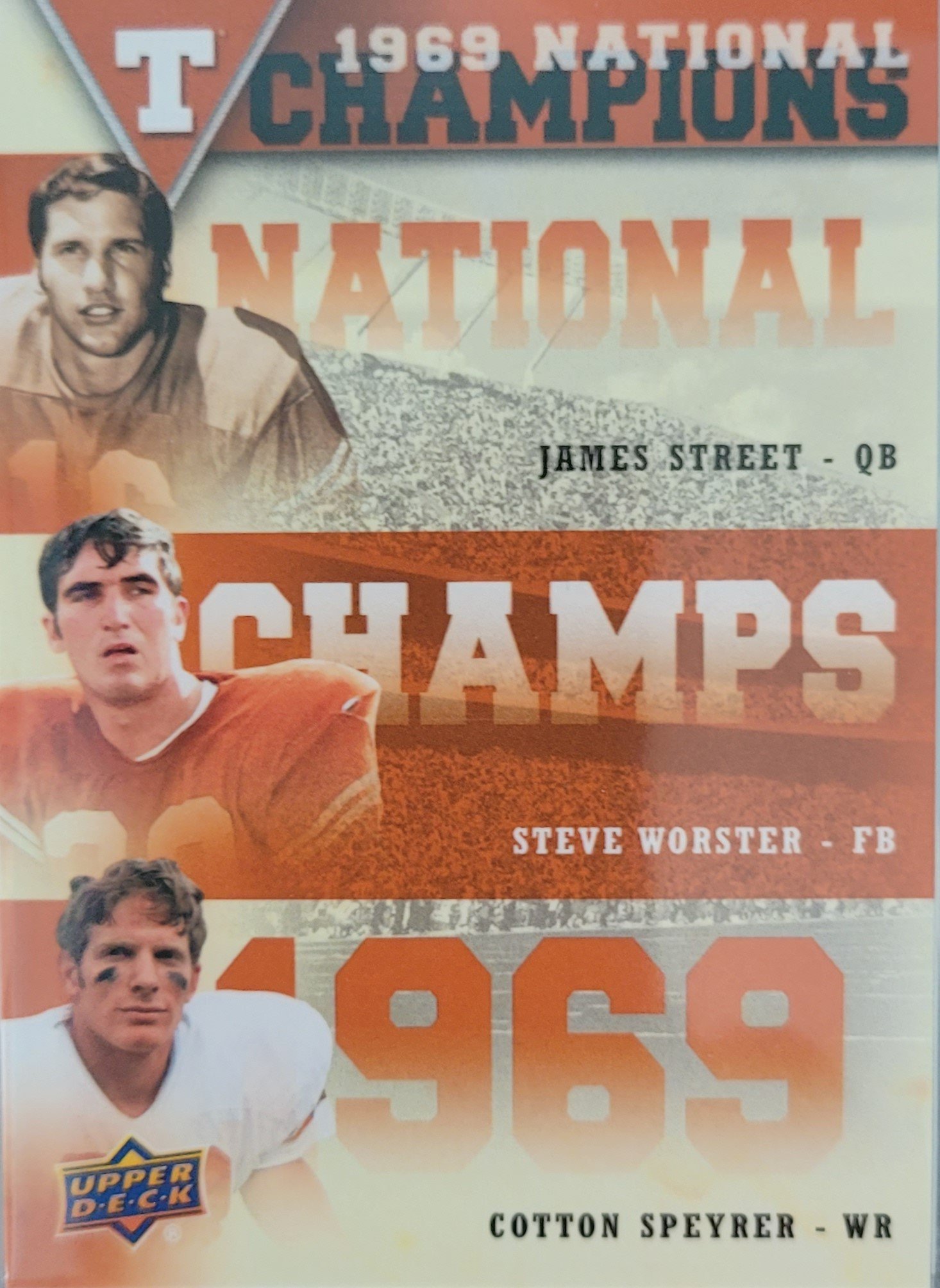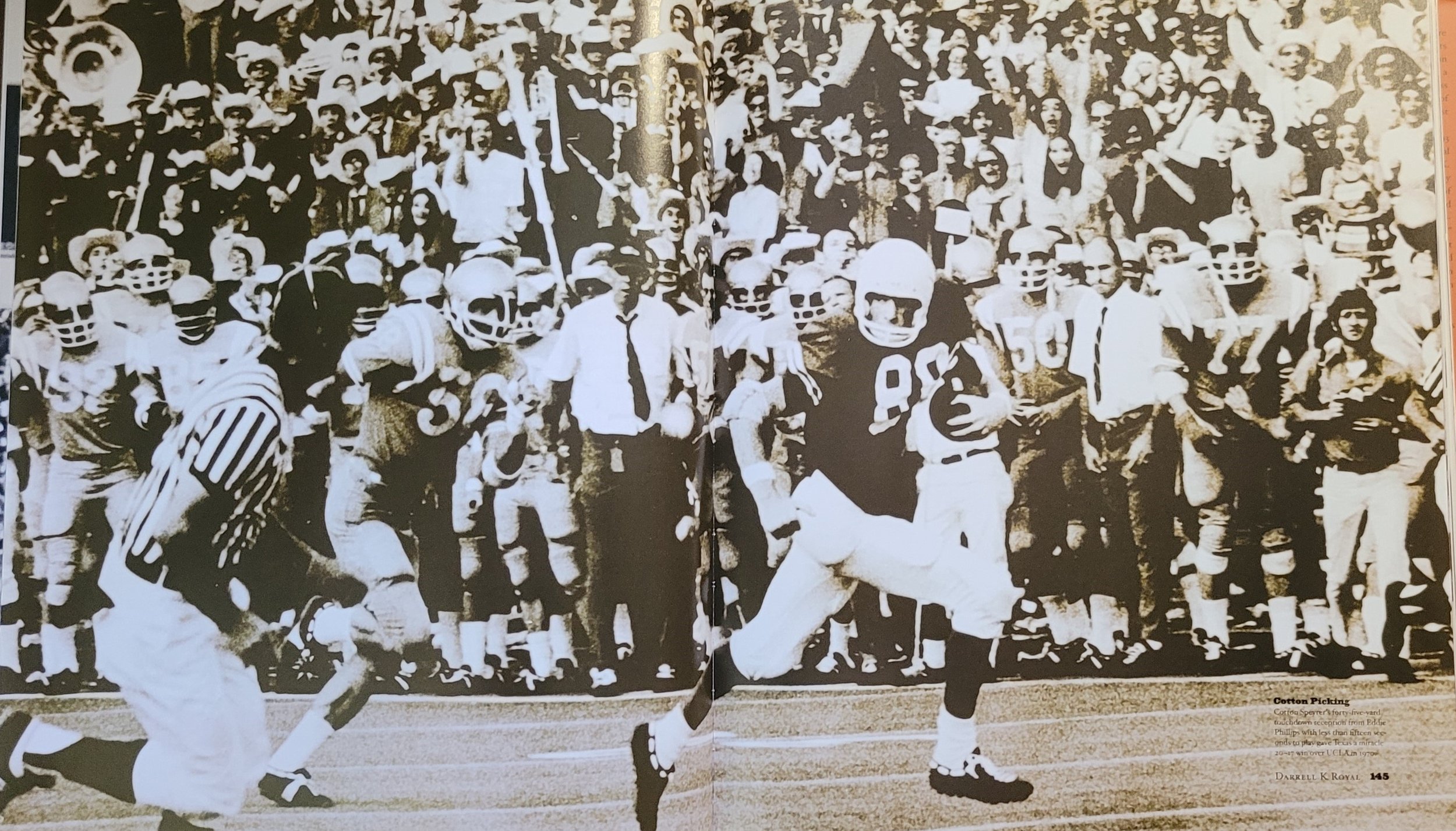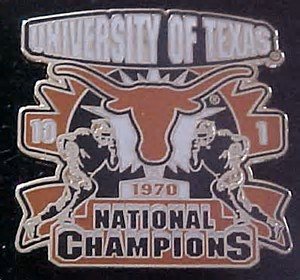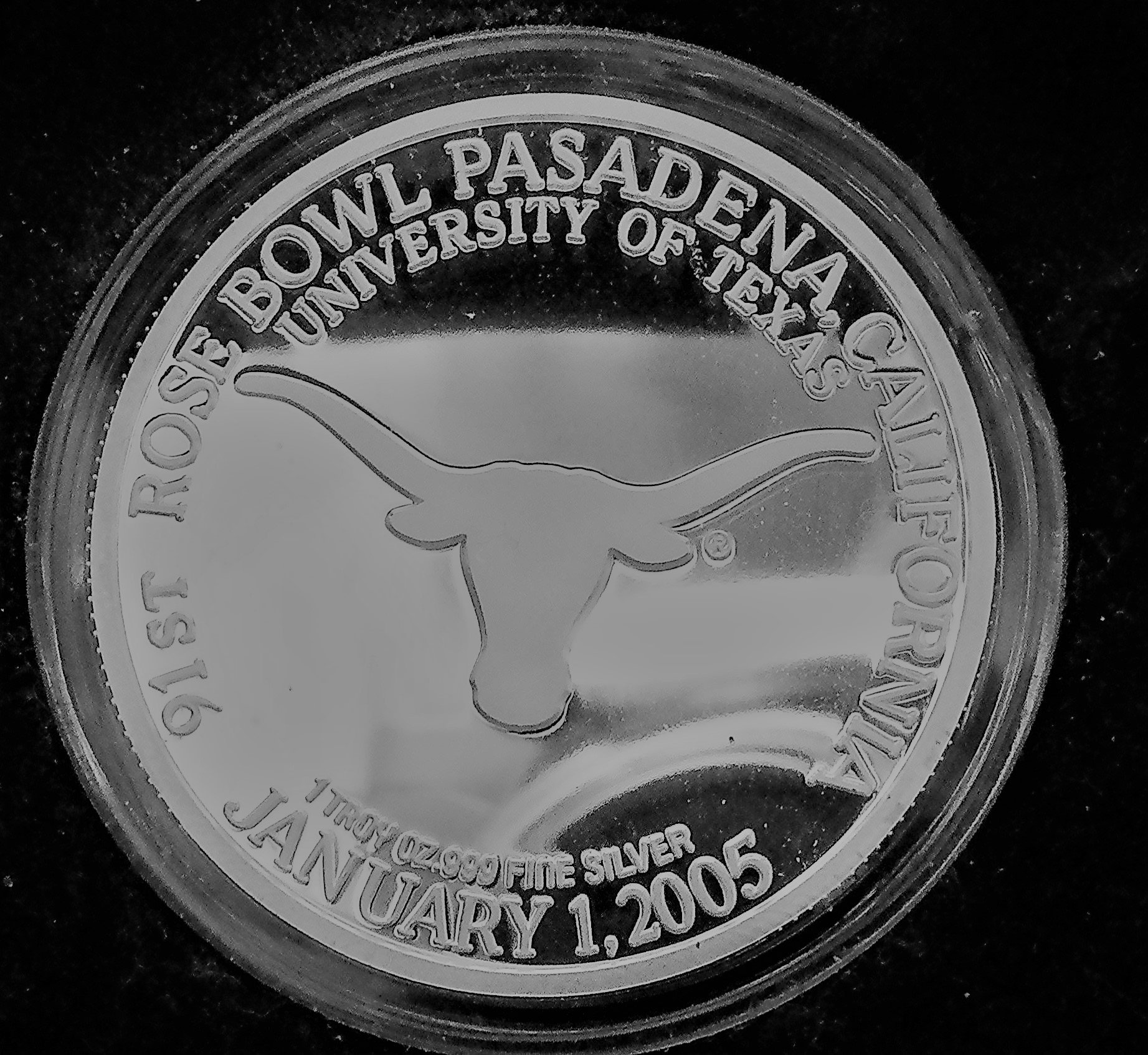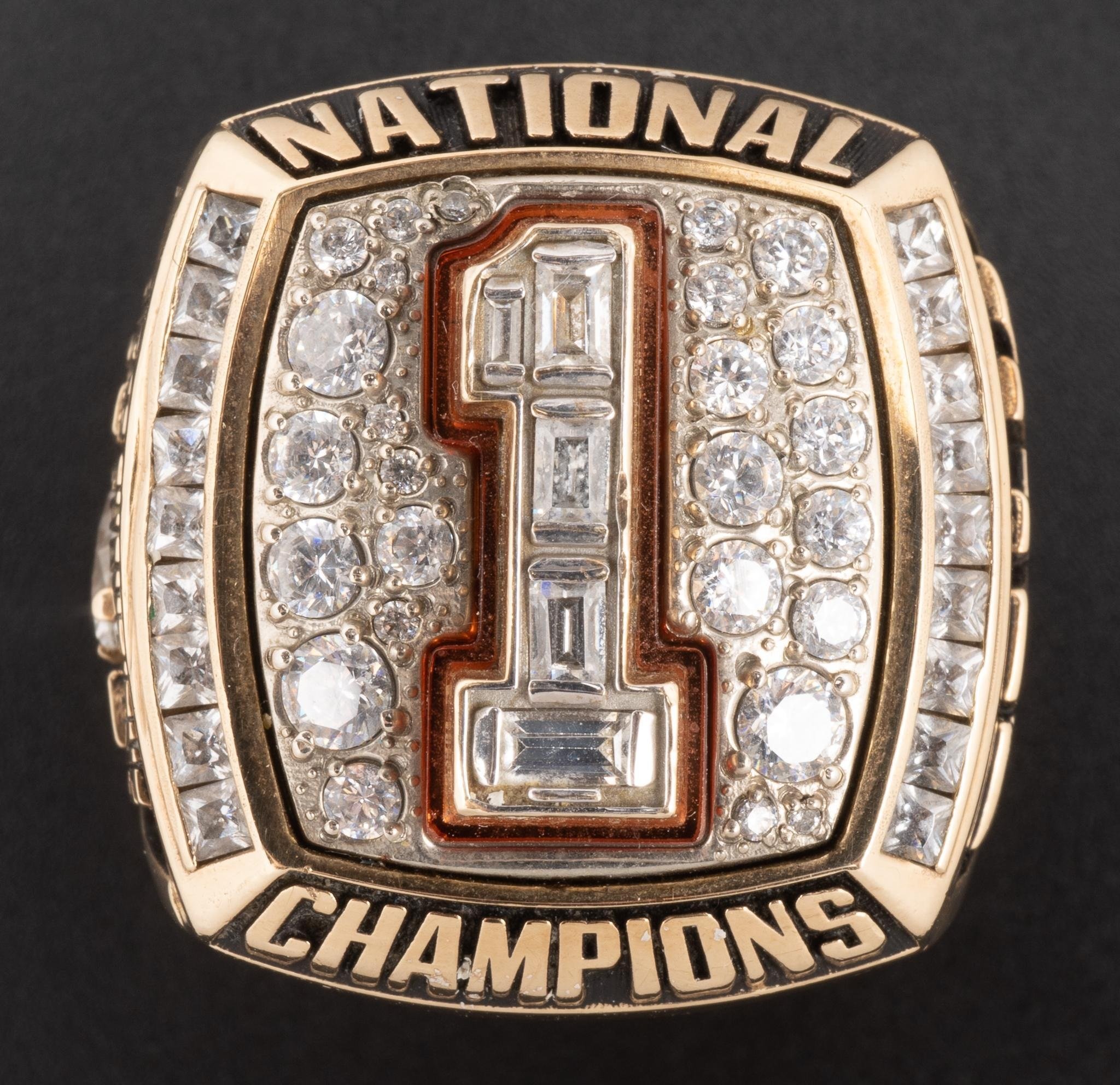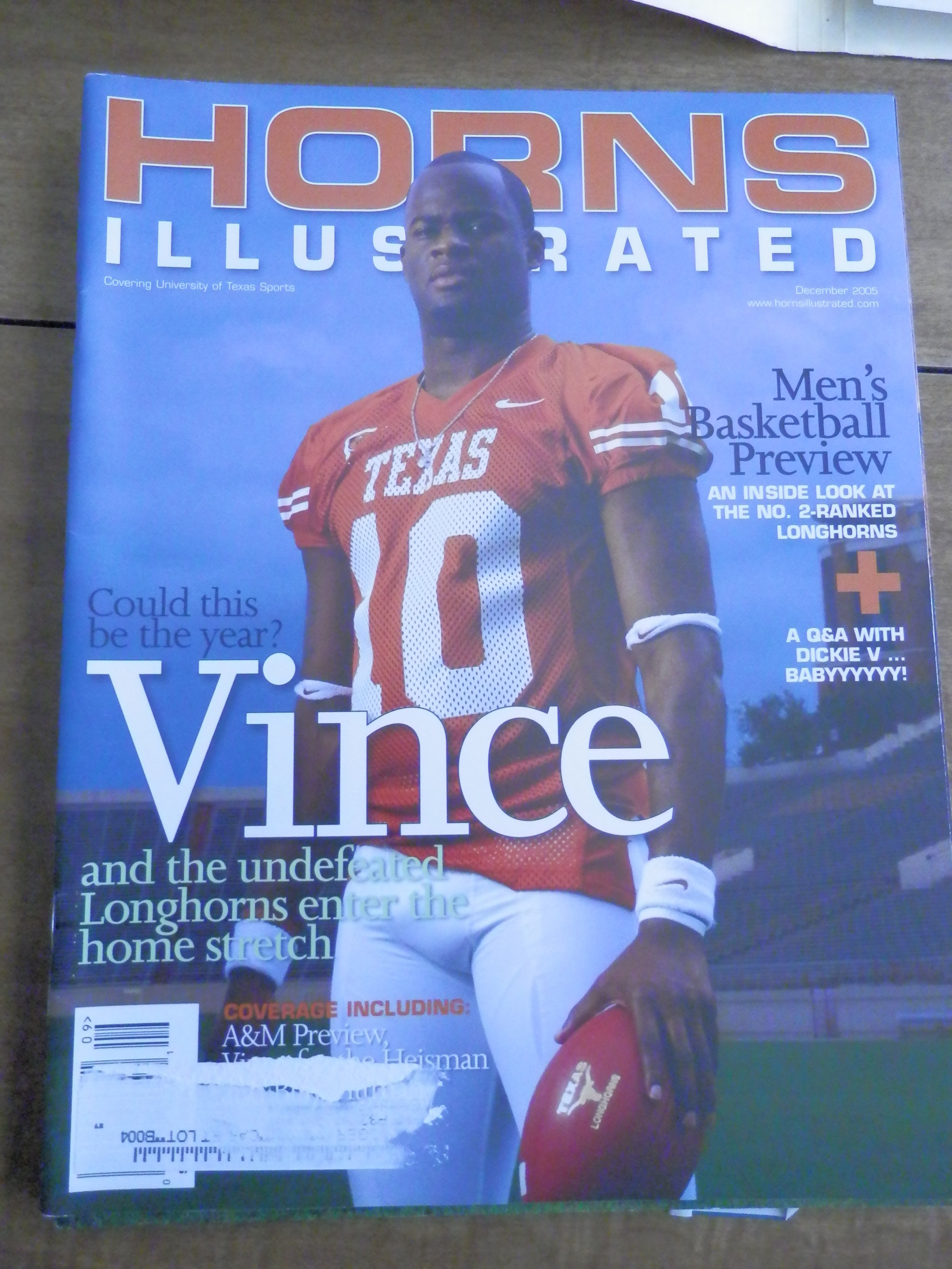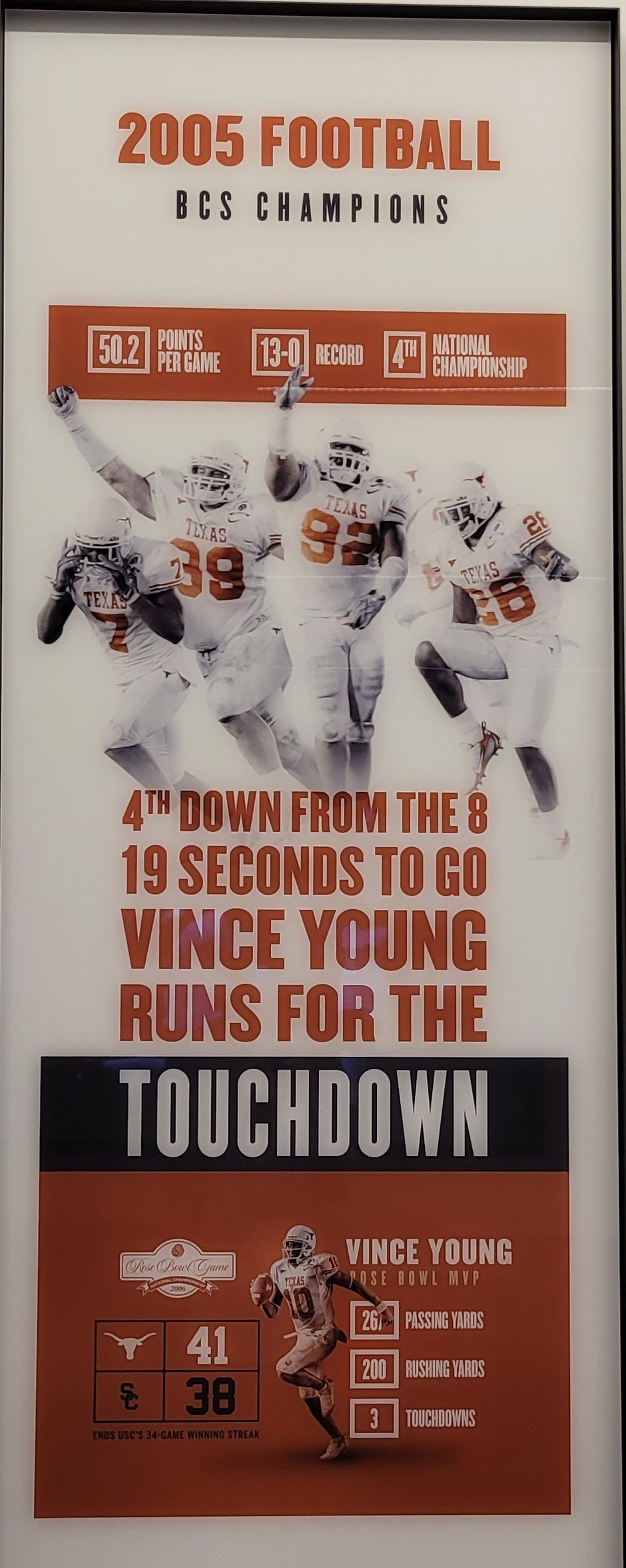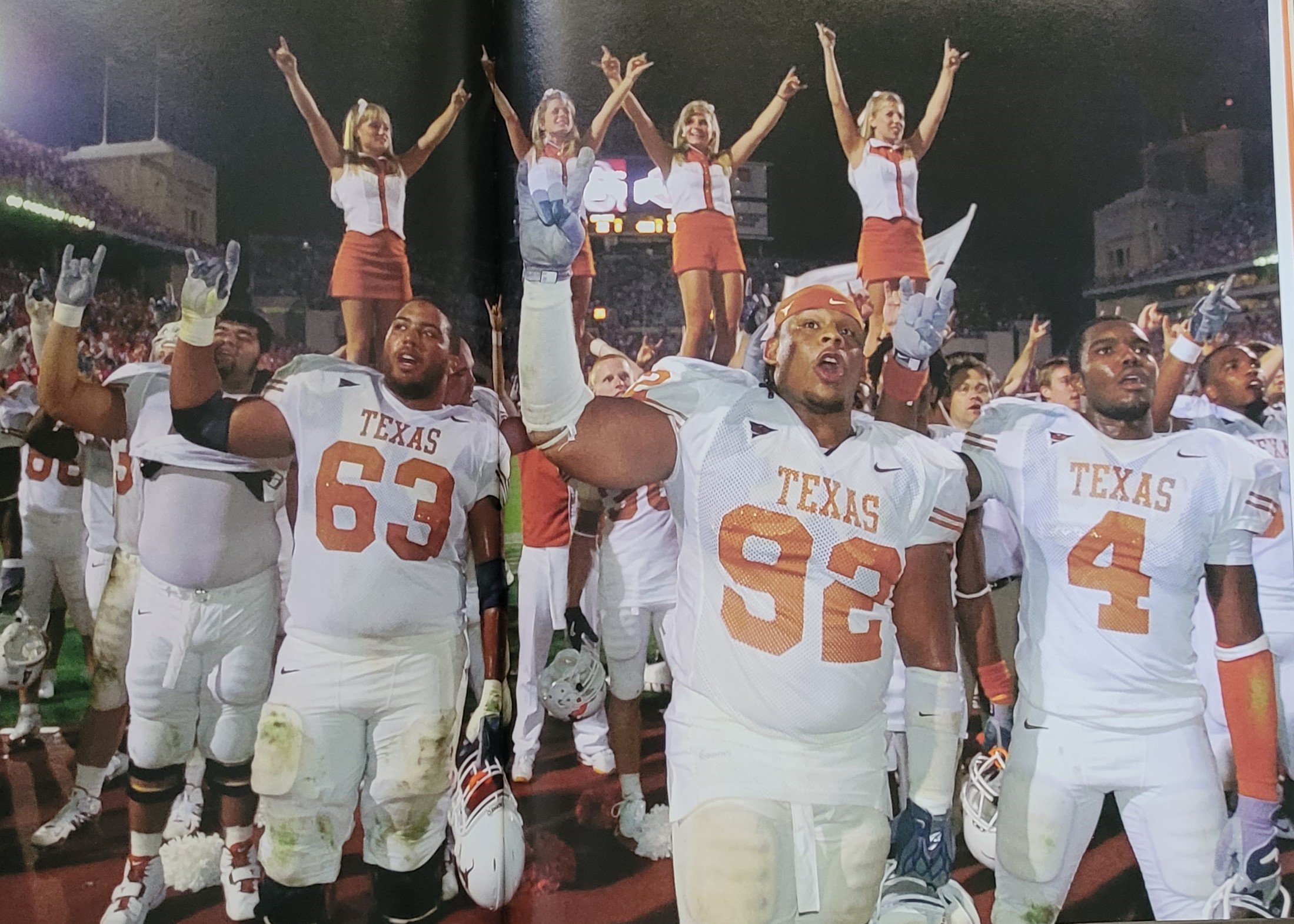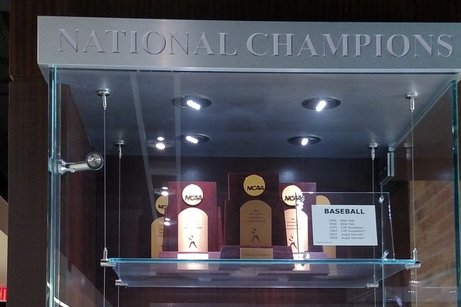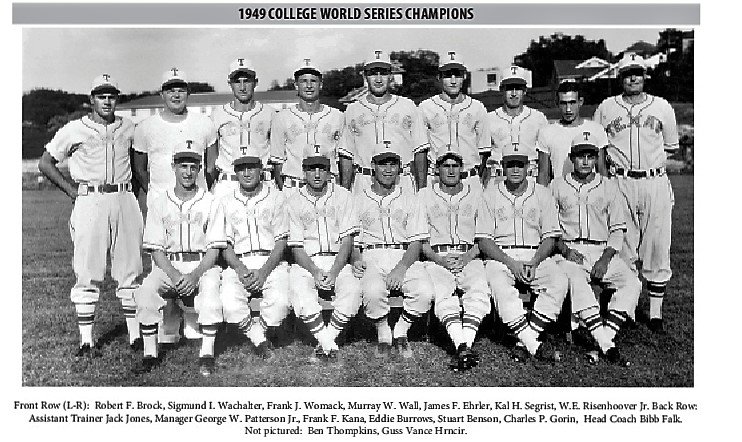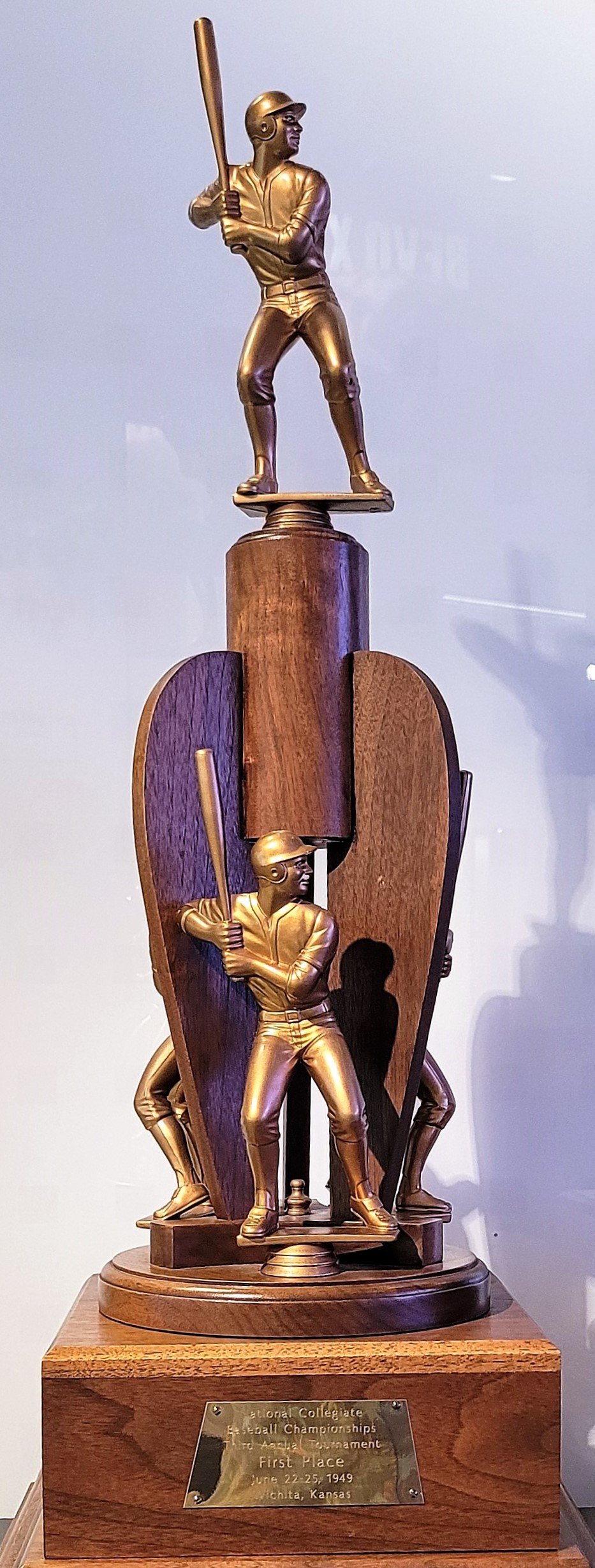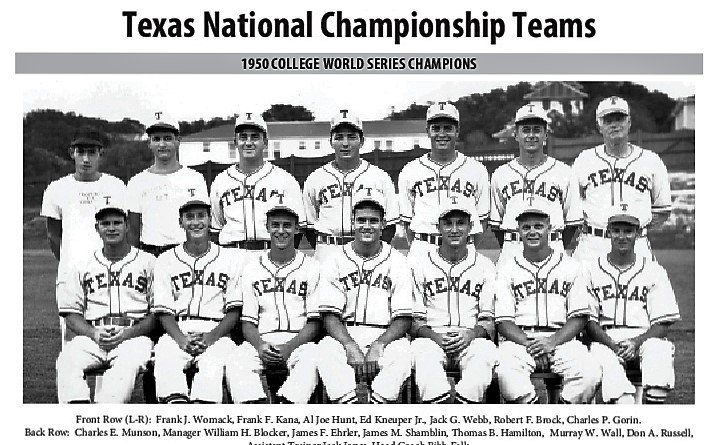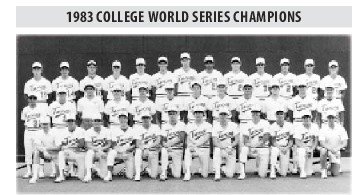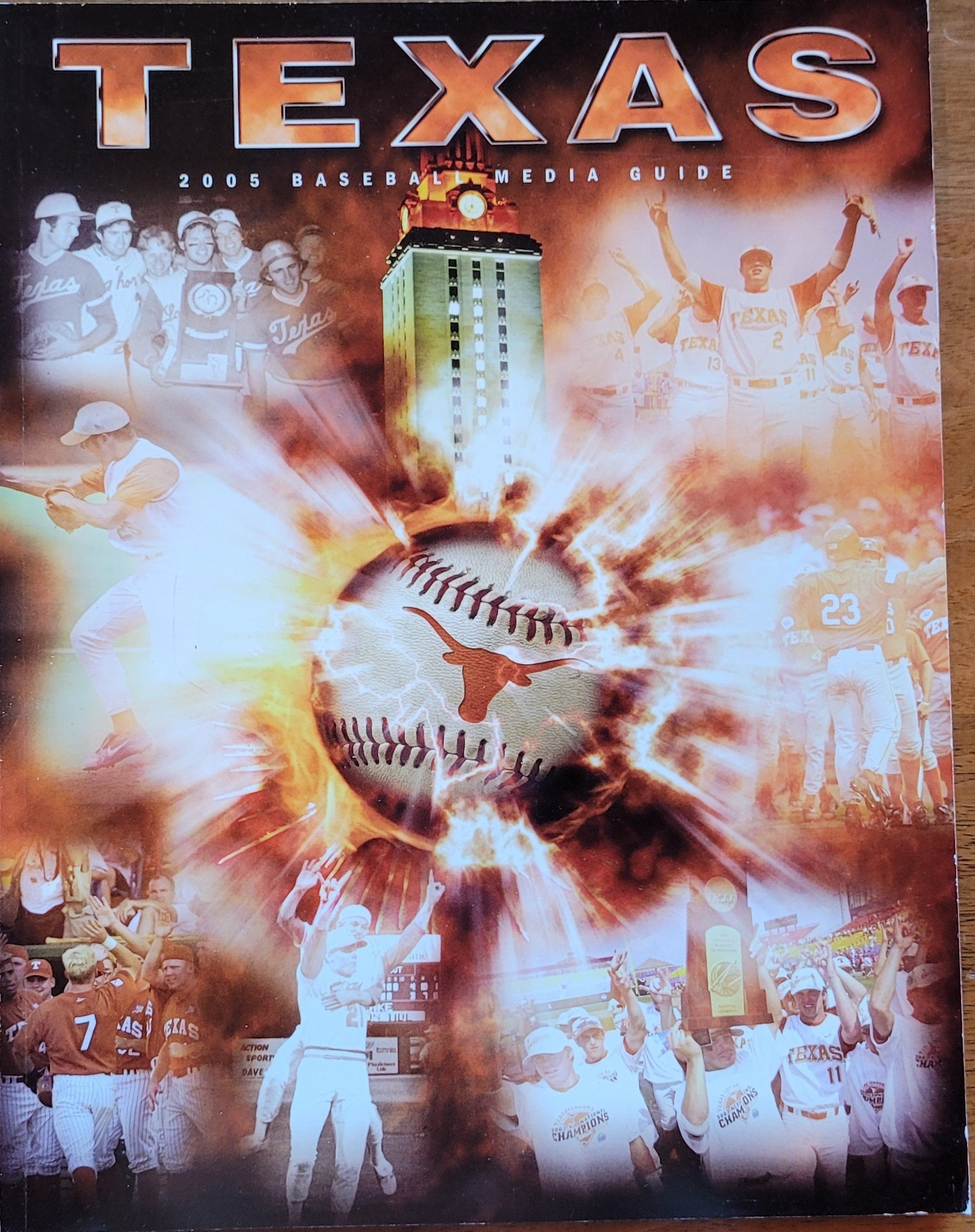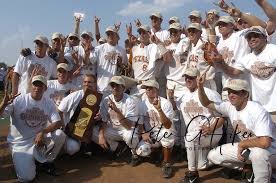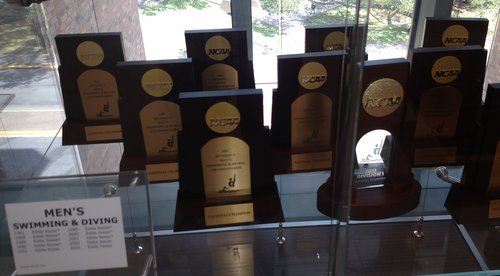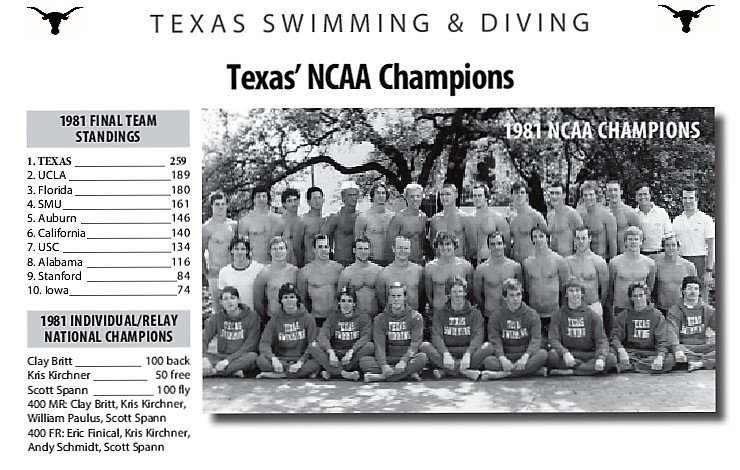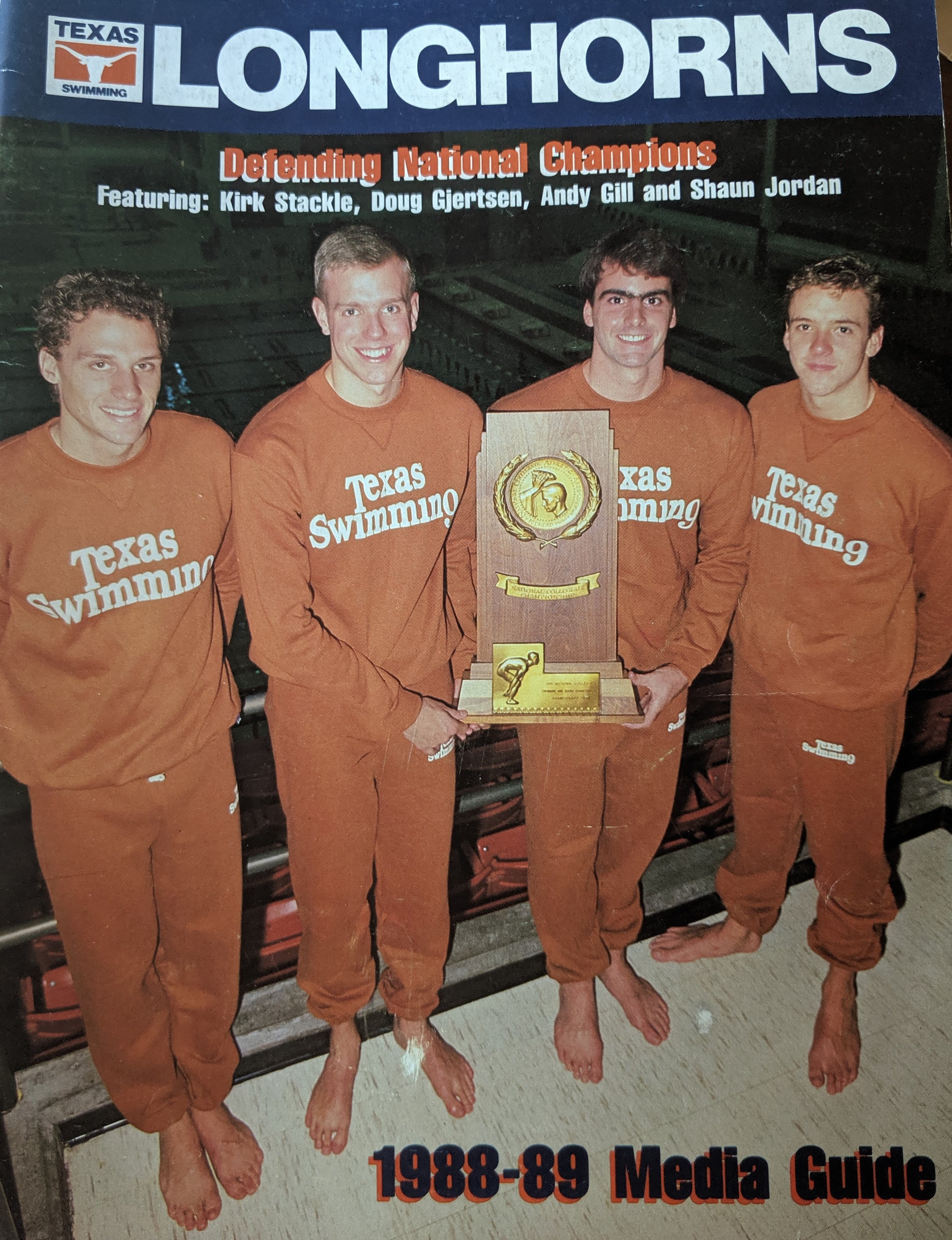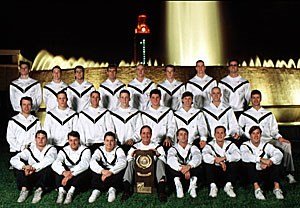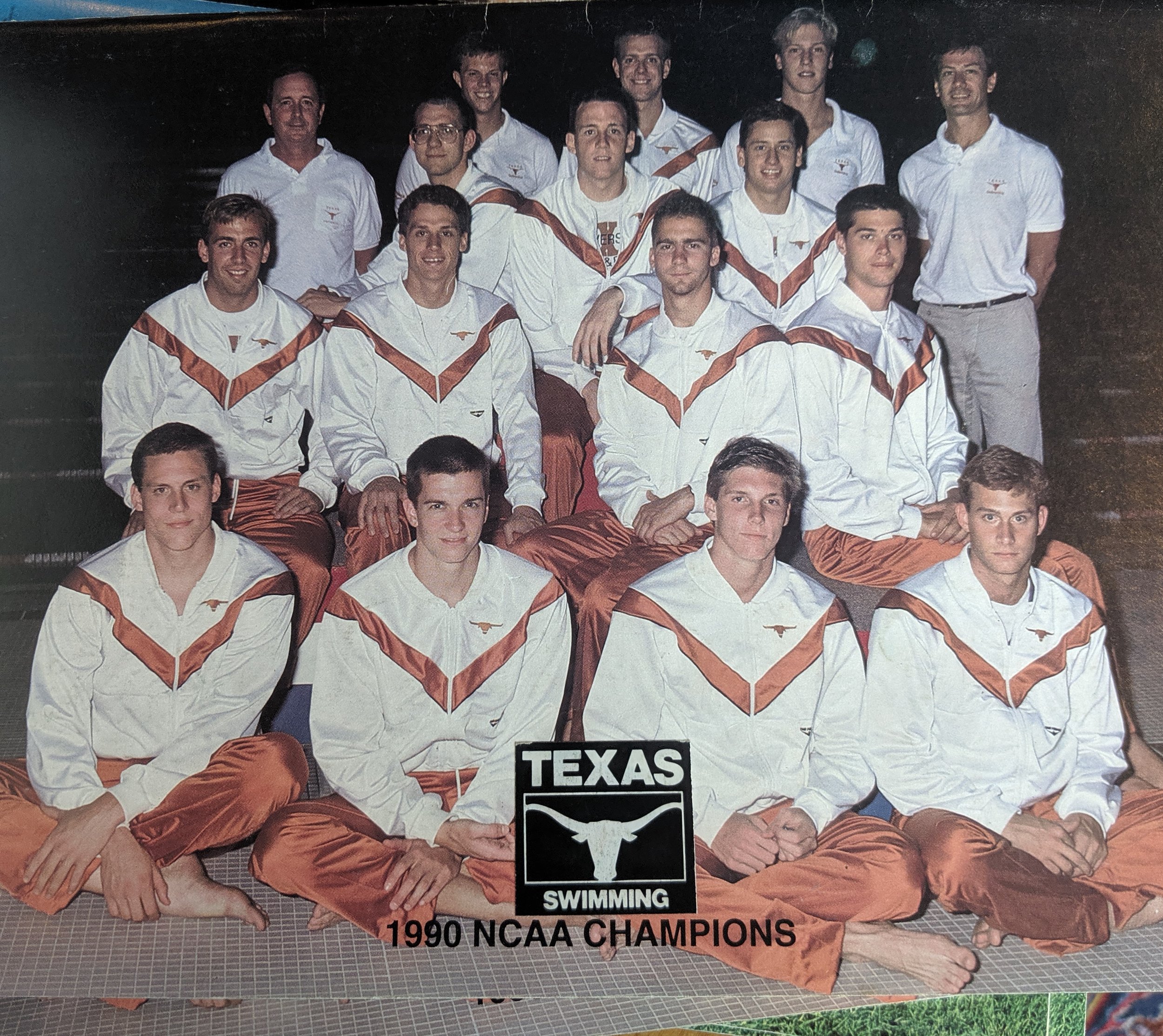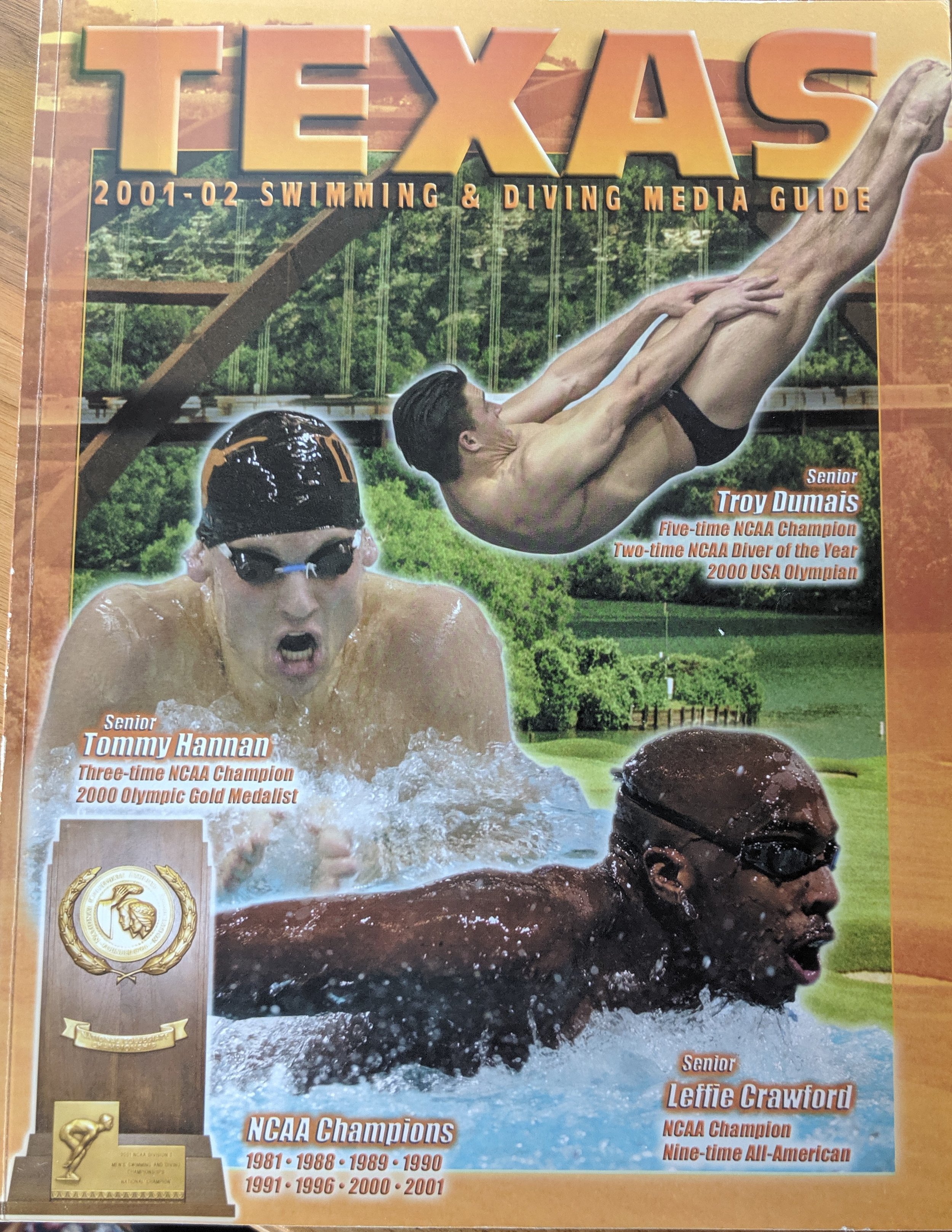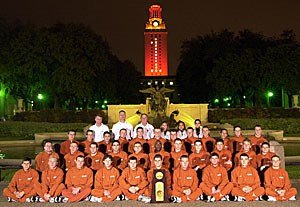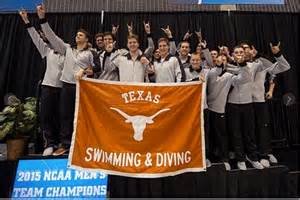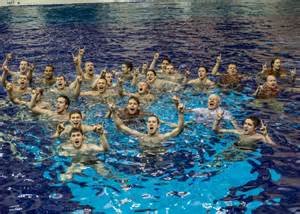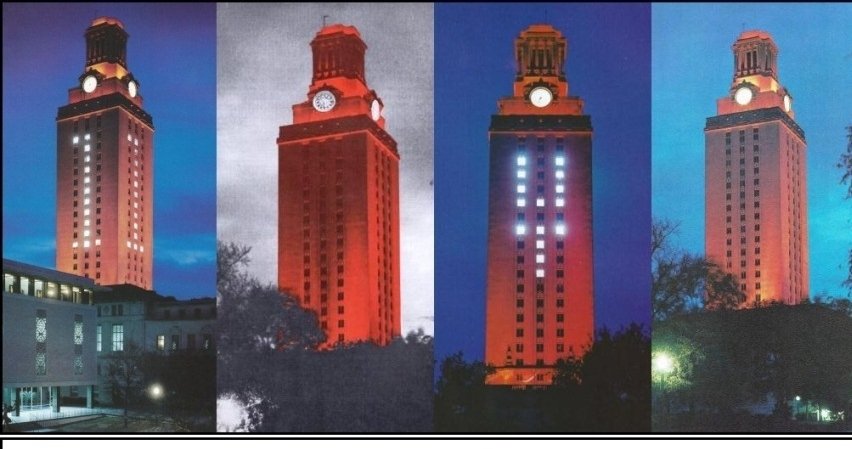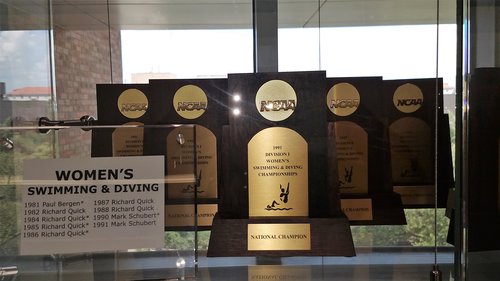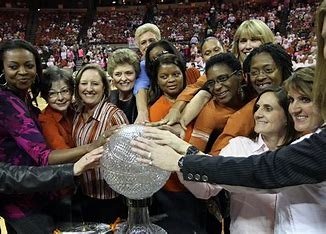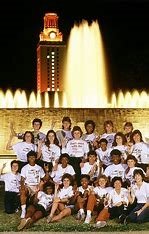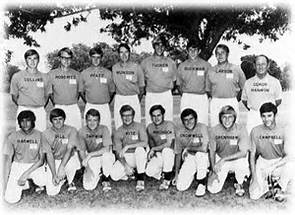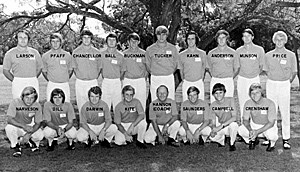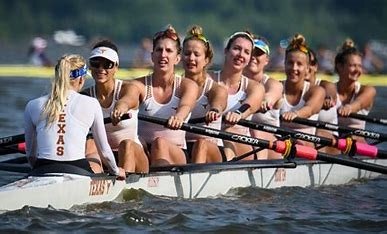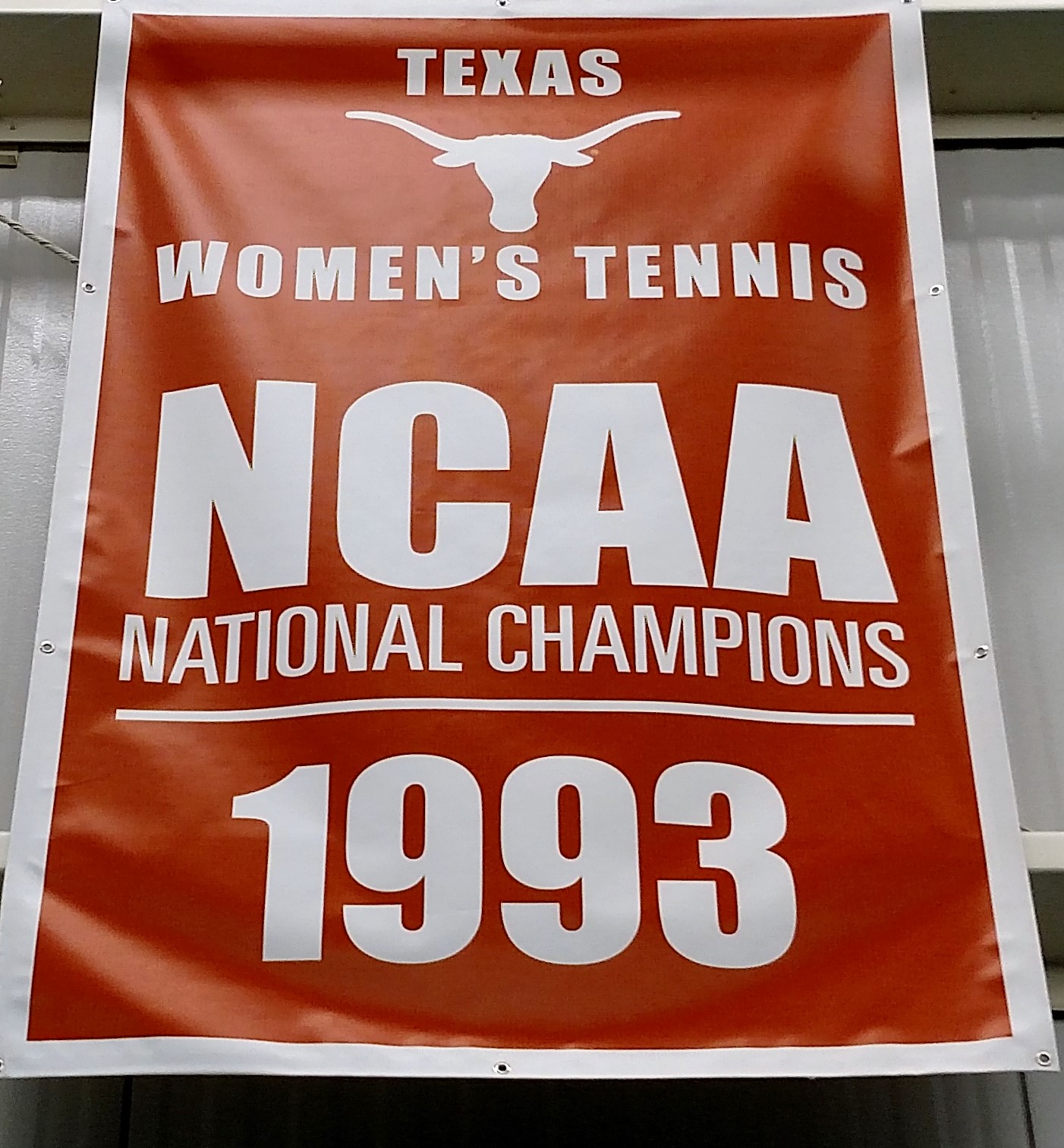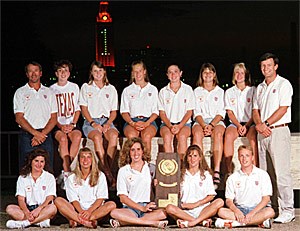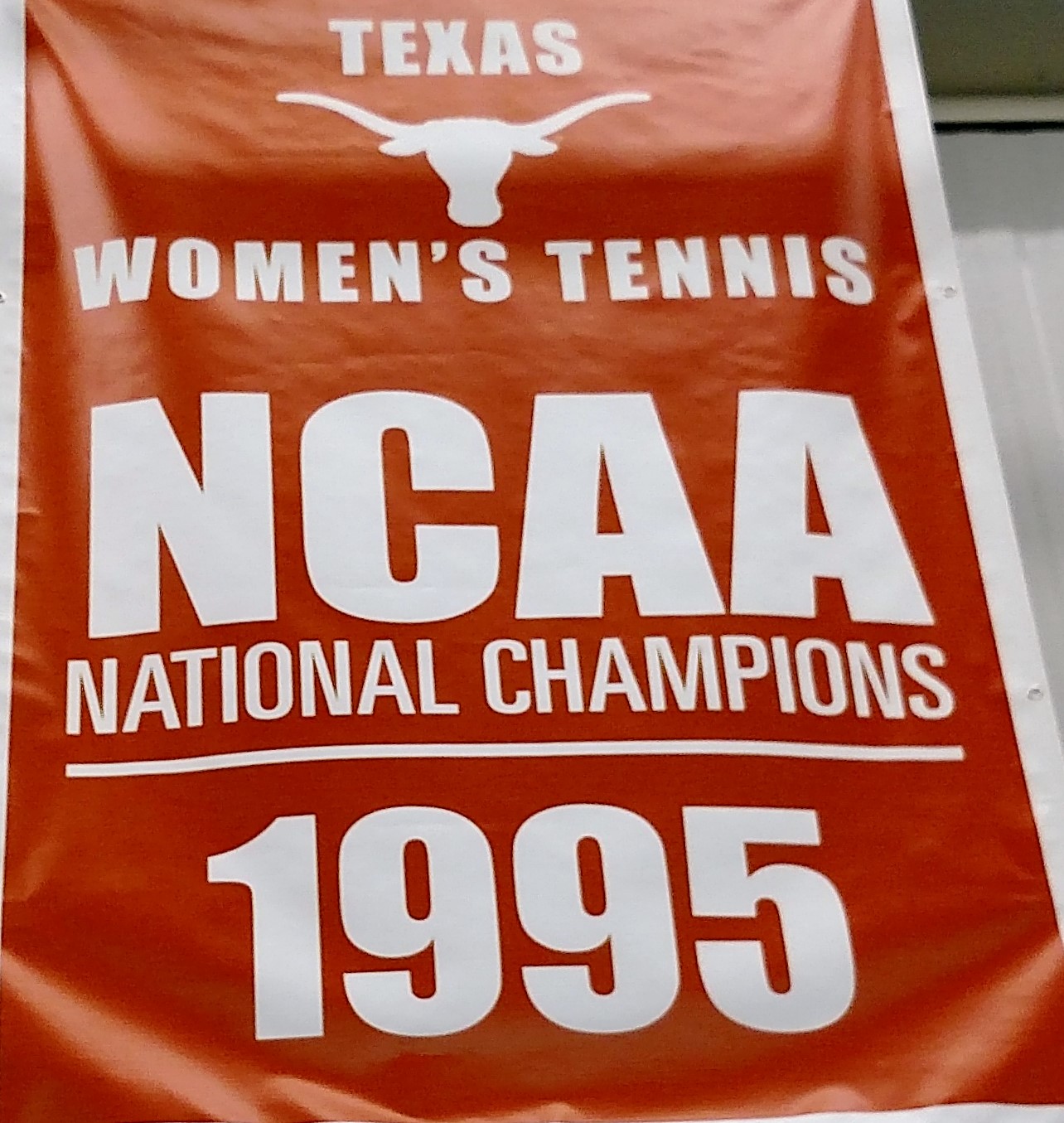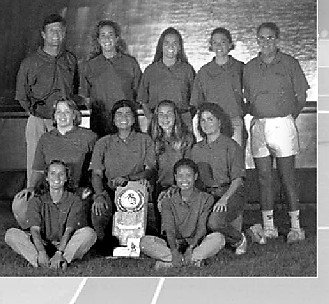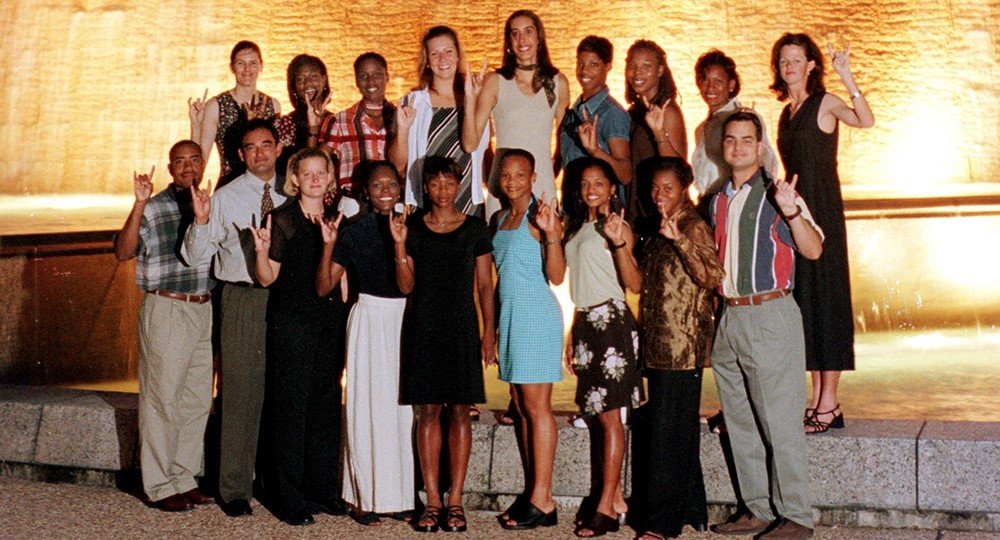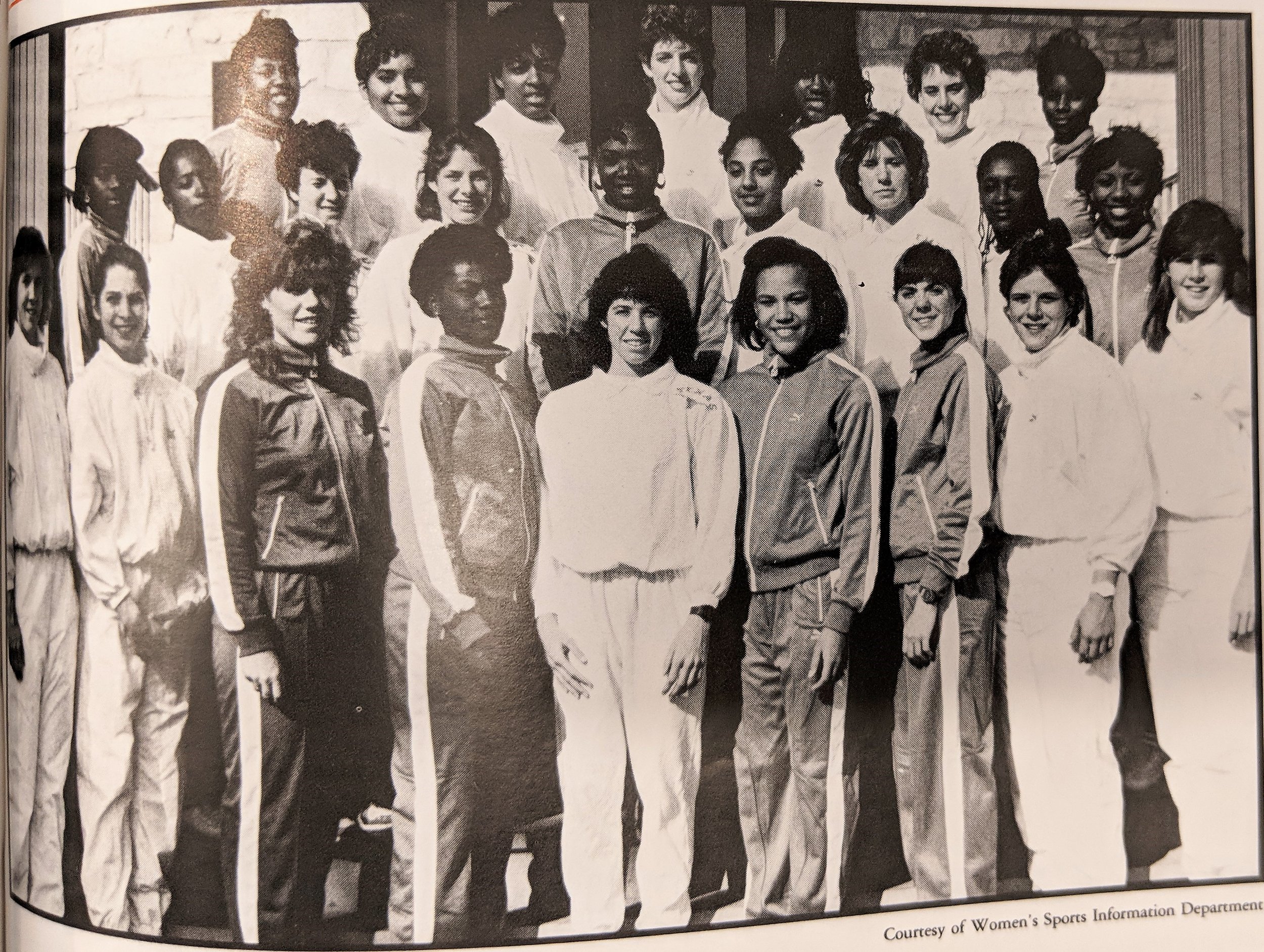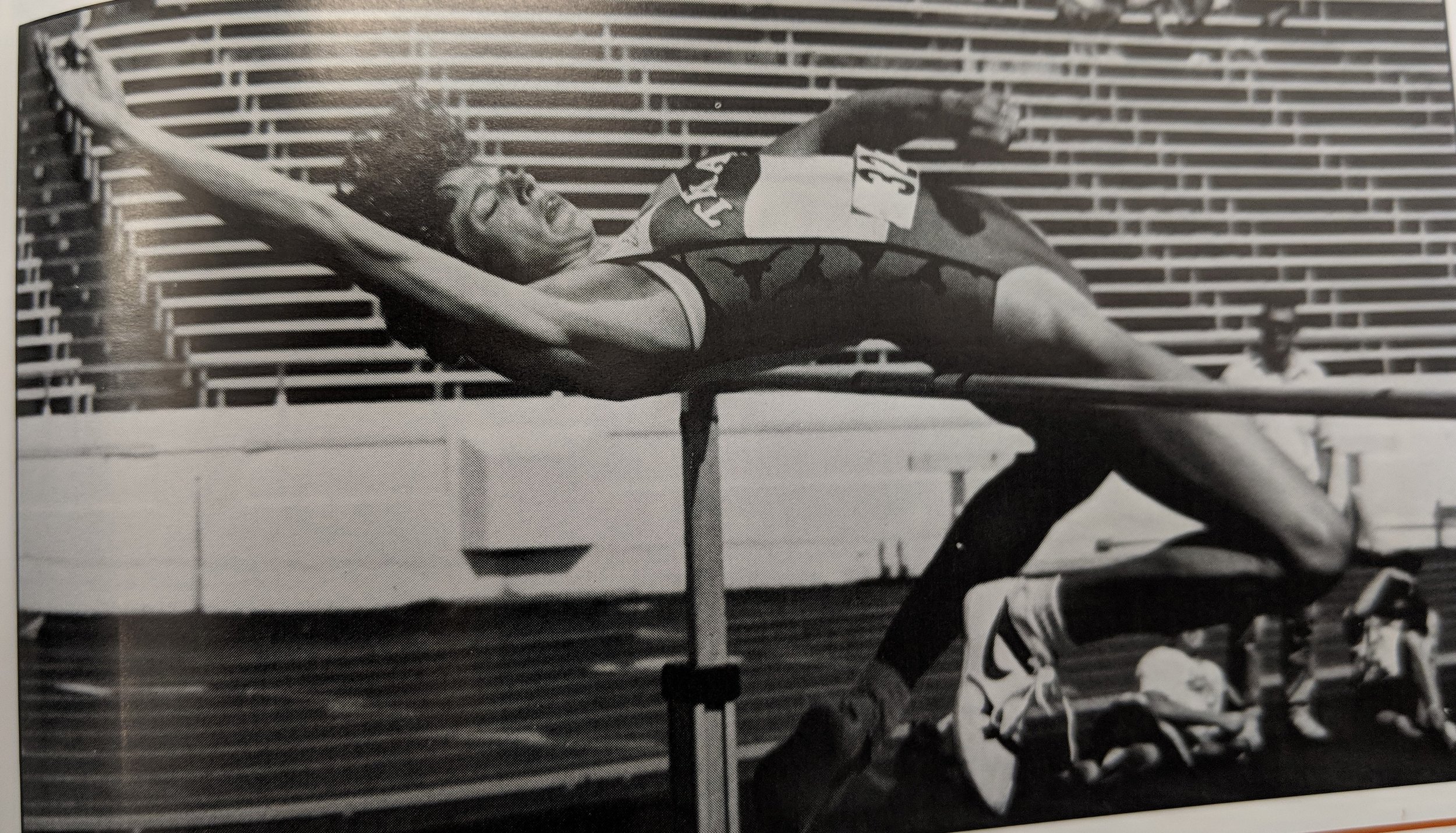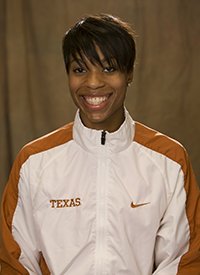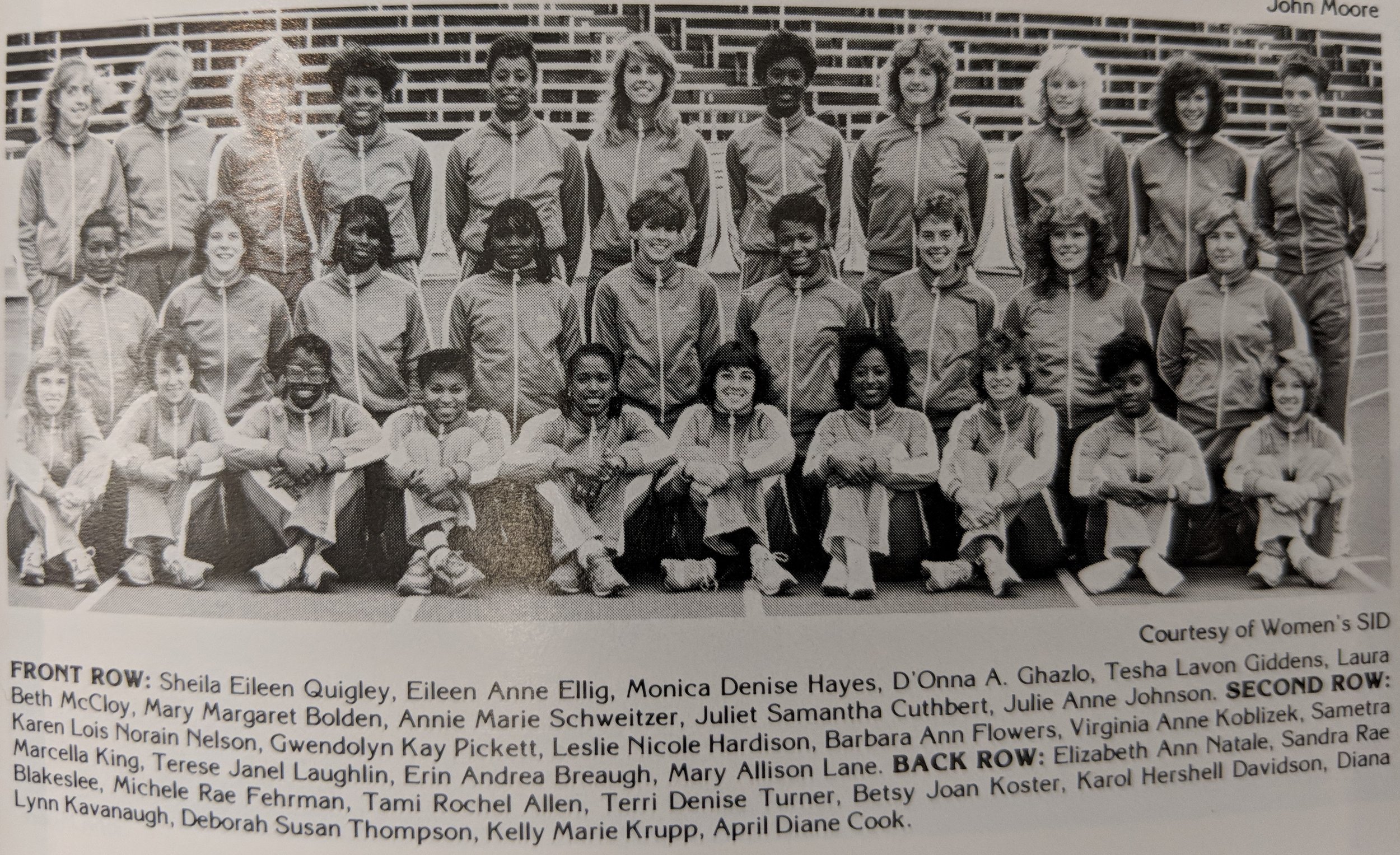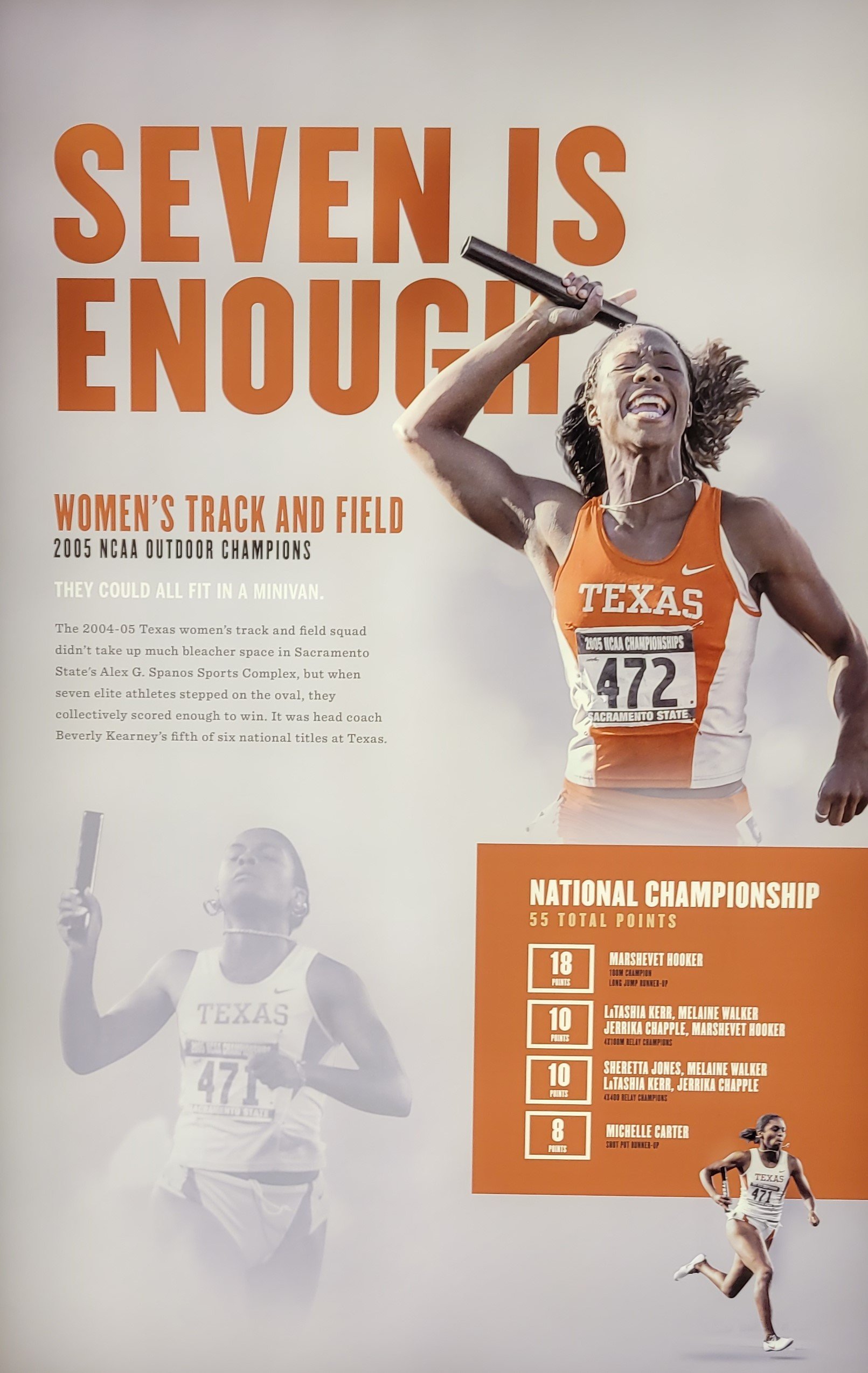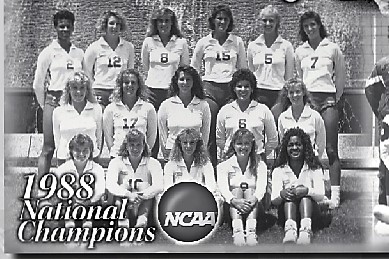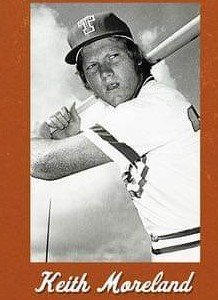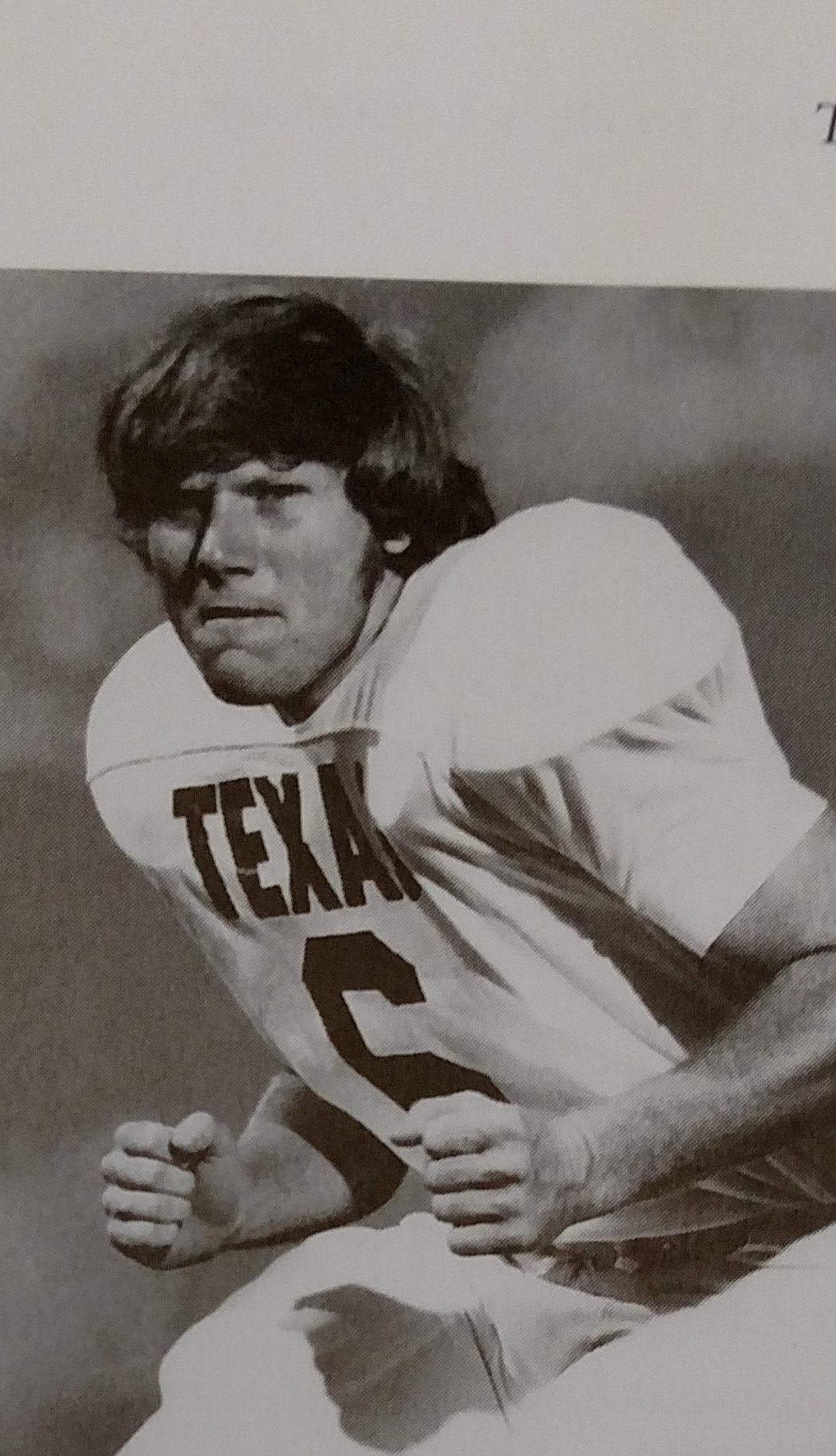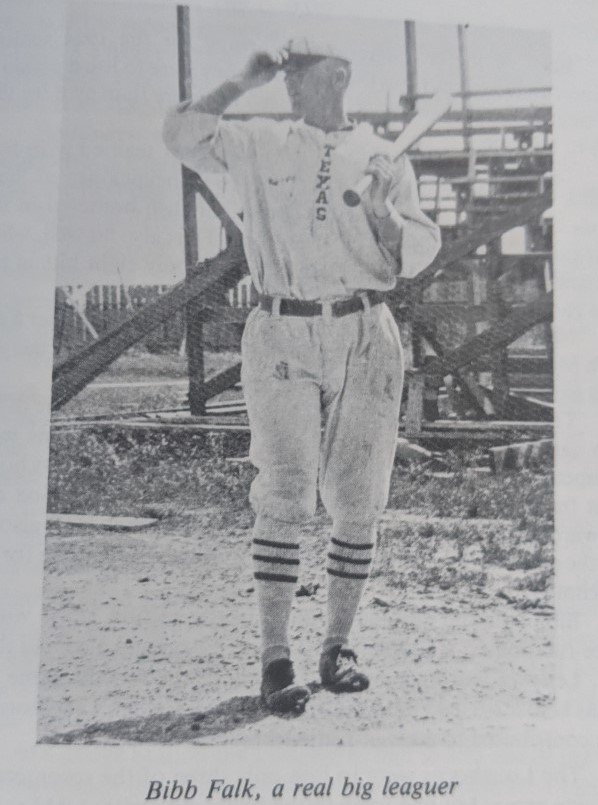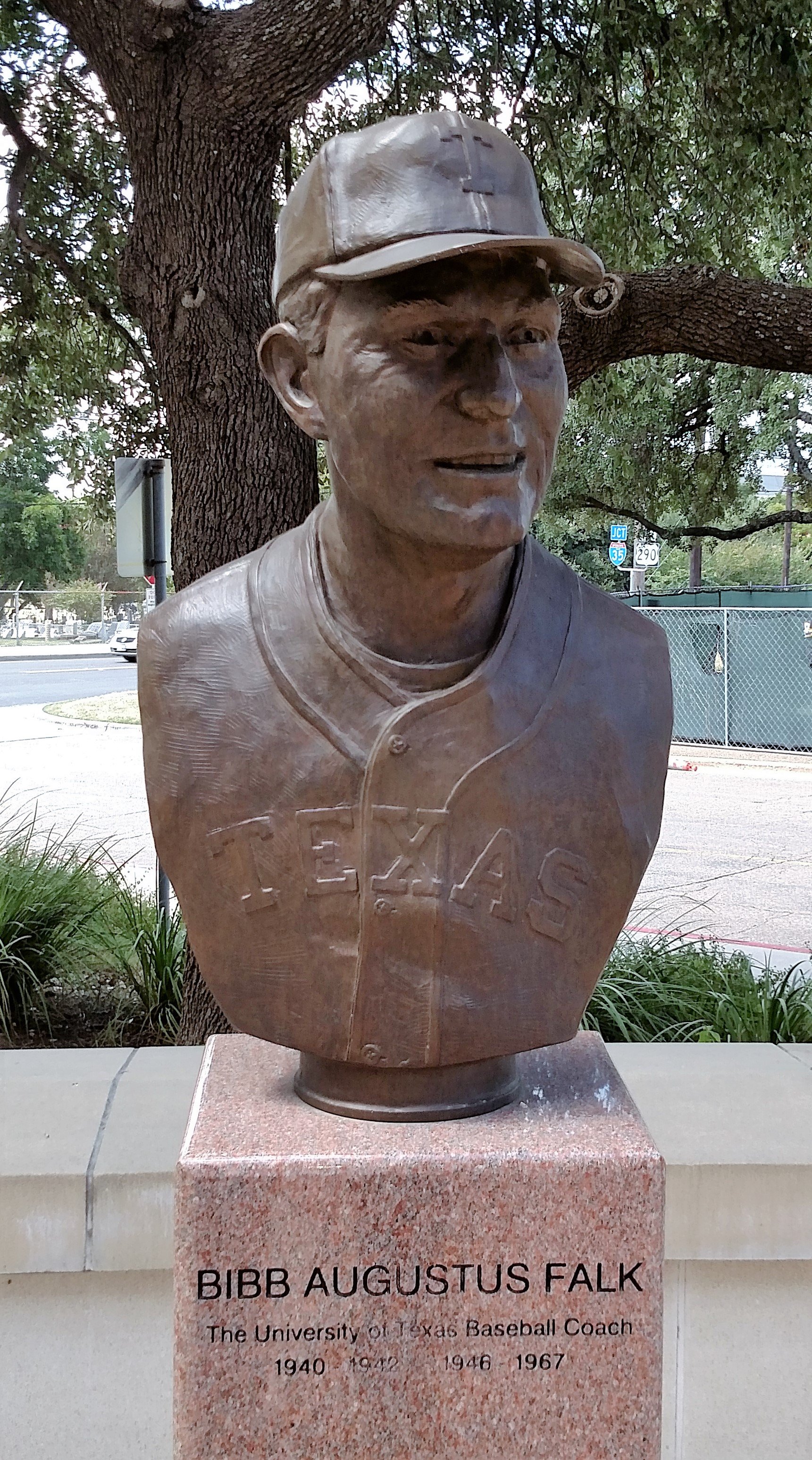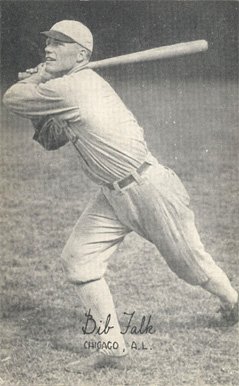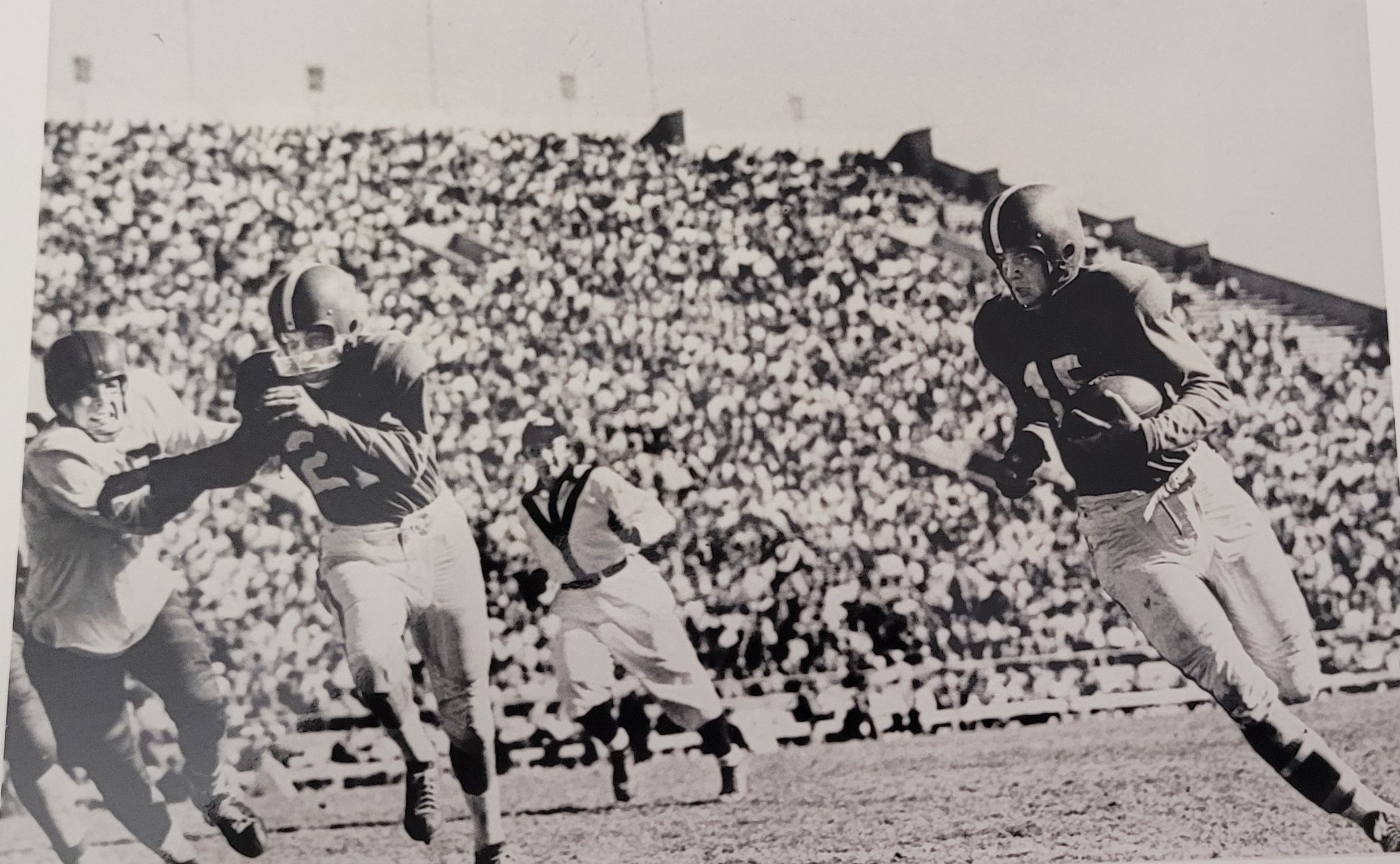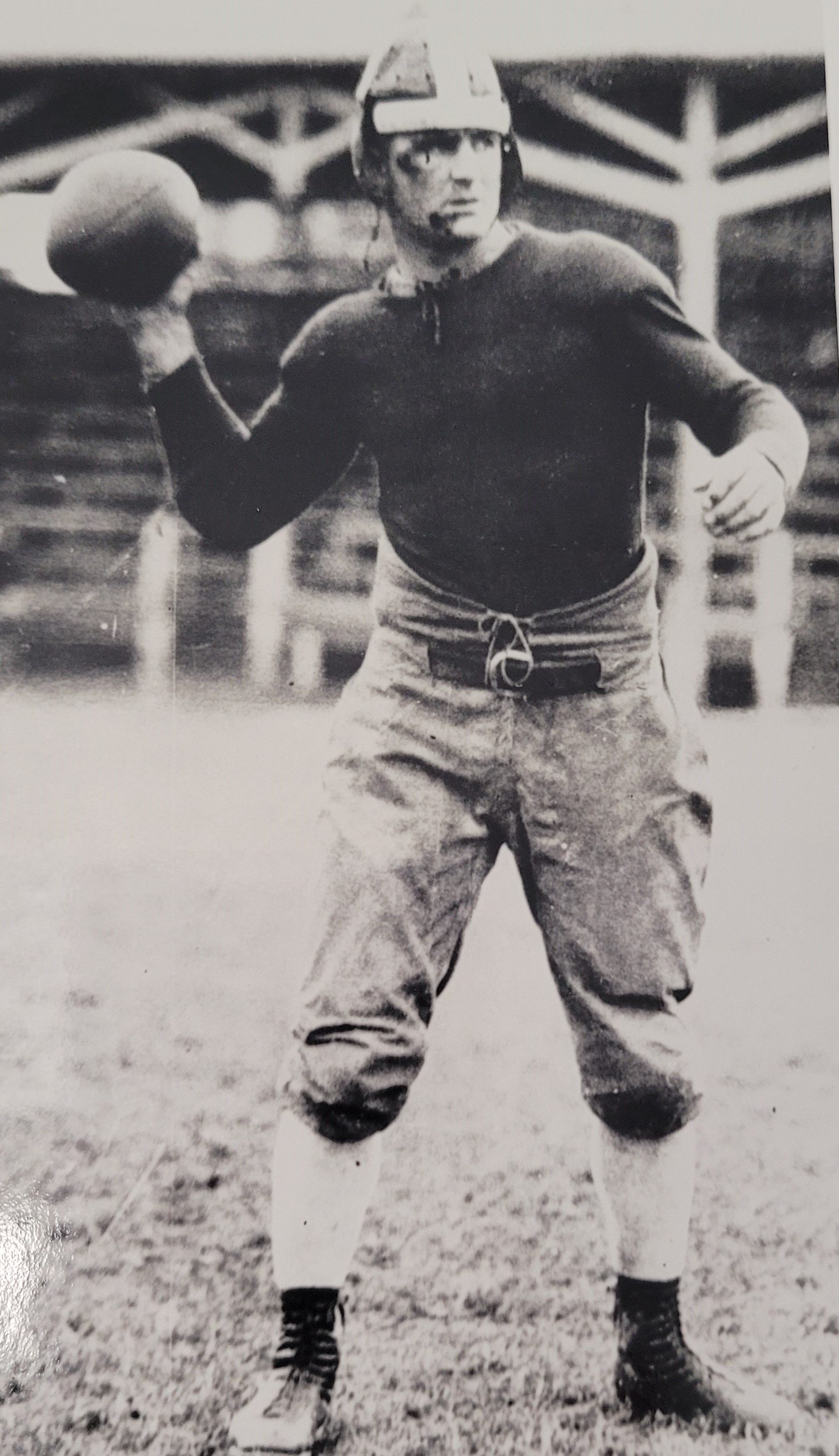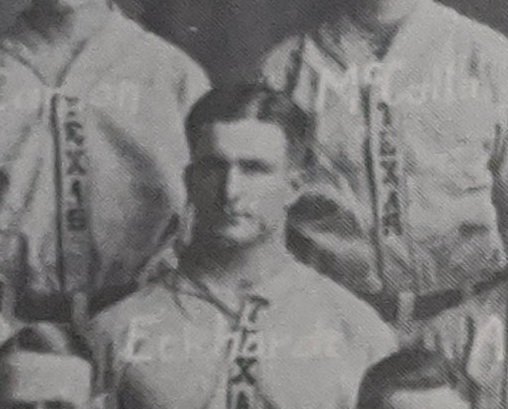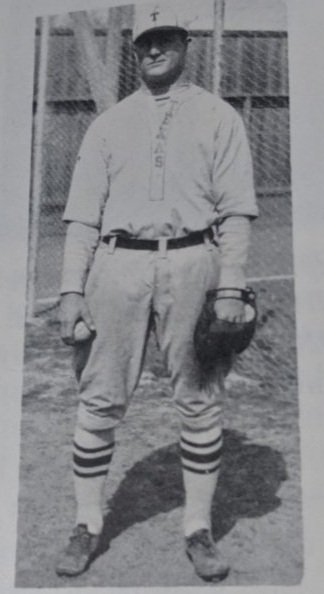After the 1923 football season he was unanimously voted to the All-Southwest Conference team, and he was given an honorable mention on Walter Camp’s All-America team. Though the SWC did not officially give superlative awards at this time, Eckhardt was named by several sports writers as the conference’s most valuable player of the 1923 season. Austin American sports editor L.L. Engelking wrote at the end of that campaign that Eckhardt, “is probably the greatest running halfback south of the Mason and Dixon line”. The aforementioned professor T.U. Taylor named him as the second team right halfback (behind Fenner Leslie) on his all-time Texas team in 1925. A decade later in 1935, Eckhardt was cited as one of the Longhorns’ all-time halfbacks in a number of surveys of sports writers and longtime fans.
He was also a star pitcher and outfielder for the Longhorn baseball team, on which he played for three seasons. Texas won SWC championships in two of his three seasons with the team, and in Eckhart’s final season (1924) he was an All-SWC pitcher on a team that produced an incredible record of 28-1. The first College World Series was not held until over two decades later, so we’ll never know how good this team was nationally.
After spending most of the next three years out of baseball while working as a teacher and coach, Eckhardt returned to the game in 1928, at age 26, and had a very long run in professional baseball, though his career was spent almost exclusively in the minor leagues. He was a good left-handed contact hitter who was renowned as a good opposite field hitter and may have been the most prolific base hit collector in the history of the minor leagues. He is recorded as having a career minor league batting average of .366 in 14 seasons, and he had an incredible 315 base hits in 189 games played with the Mission Reds of the Pacific Coast League in the 1931 season. His lack of both fielding chops and power at the plate (he had just 63 career home runs in 7,204 minor league plate appearances) prevented him from ever becoming a major league regular, though he did have a pair of brief stays at the major league level. At age 30, he appeared in eight games as a pinch hitter with the Boston Braves during the 1932 season, and four years later he played in 16 games with the 1936 Brooklyn Dodgers, but he hit just .182 in 49 plate appearances and spent the rest of his career in the minors.
Four years before his first major league baseball appearance, he played his one and only season of pro football. He played in 11 games at fullback for the 1928 New York Giants, which was five years after his final season on the gridiron with the Texas Longhorns. He became the first of two Longhorn athletes to play in both the NFL and Major League Baseball.
Oscar Eckhardt was inducted into the UT Athletics Hall of Honor in 1961. For his minor league hitting exploits he has been inducted into the halls of fame for both the Pacific Coast League and the Texas League.
Ernie Koy Sr.
football — 1930-32
baseball — 1931-33
Ernie Koy Sr. was an all-around star athlete from Sealy who excelled on the athletic fields at UT in the early 1930s and was arguably the most decorated football-baseball athlete the University had produced up to that point. In football, he played fullback and made the All-Southwest Conference first team three times, while in baseball he was thrice a first team All-SWC outfielder.
Standing six feet tall and weighing 200 pounds, he was one of the Longhorns’ two or three heaviest players as a senior on the 1932 football team, of which he was a co-captain. In the following spring, he was the captain of the 1933 Longhorn baseball team and became one of UT’s first two baseball All-Americans along with his teammate, shortstop Ray Ater. After signing with the New York Yankees in 1933, he toiled in the minor leagues for five seasons, then was sold to the Brooklyn Dodgers in 1938 and made his major league debut that year at age 28. He played for four teams in an MLB career that spanned five seasons (1938-42) and which came to an end when he joined the Navy during the height of World War II.
Though there may have been some recency bias involved, Ernie Koy was viewed in his time by a number of longtime football observers as the best fullback in UT’s history. In 1934 and 1935, Koy was named as the first team fullback on All-Time Longhorn football teams produced by notable sports editors at newspapers in Austin, Dallas, and Waco.
His sons Ernie Koy Jr. and Ted Koy were both football stars at UT during the 1960s and played on the program’s national championship teams of 1963 (Ernie) and 1969 (Ted). The younger Ernie Koy went on to play six seasons in the NFL, while his brother Ted played five NFL seasons himself.
Ernie Koy Sr. was inducted into the UT Athletics Hall of Honor in 1960.
Bohn Hilliard
football — 1932-34
baseball — 1933-35
Bohn Hilliard was a star athlete at Orange High School in southeast Texas, from which he graduated in 1928. After spending two years as a junior college student-athlete at the Schreiner Institute in Kerrville, he enrolled at Texas in 1930 and played that year for UT’s freshmen football team. (At that time, seasons spent at a junior college did not affect the eligibility clock for a student-athlete at the college level.) He withdrew from school for a year due to academic issues, then returned to UT and joined the football team in 1932, by which point he was a married, 24-year-old sophomore, and an expectant father.
He showed himself to be one of the best backs in the south during his first season with the Longhorn varsity. In the 1932 game vs. Oklahoma, which was played five days after the birth of his son, Hilliard scored both Texas touchdowns in a 17-10 win, with the second of those touchdowns coming on a 95-yard punt return, which remains the longest punt return in program history. He also intercepted a pass while on defense and recovered a blocked punt in that game.
He went on to become one of the Longhorns’ brightest backfield stars in what may have been the program’s best decade ever in terms of its star power at halfback and fullback. He was not a big back like his sometime teammate Ernie Koy, standing 5’9” and weighing only about 165-170 pounds, but he was an explosive runner. He was a punter and occasional kicker as well as a halfback, and he led Texas in scoring for three straight seasons, finishing his career with 23 touchdowns.
He made the All-SWC first team as a sophomore in 1932, and the All-SWC second team in 1933. He was a team captain as a 26-year-old senior in 1934, and during that season he made a 94-yard touchdown run against Texas Tech, the longest run in program history at the time, and today the second-longest behind only Chris Gilbert’s 96-yard touchdown run against TCU in 1967. His overall senior year production didn’t match that of his sophomore and junior seasons, as he battled an injury during that year, but he was given honorable mention on the Associated Press’s All-America team, and was the recipient of the 1934 Houston Post Trophy, which was awarded to the Southwest Conference’s most valuable player based on the votes of a group of prominent sportswriters who covered the conference.
In three seasons with the Longhorn baseball team he played second base, outfield, and also pitched, and was twice named to the All-SWC team. His efforts on the diamond as a senior in 1935 helped lead Texas to a conference title. He briefly continued his baseball career in the summer of 1935 with the Gladewater Bears, then a Class C minor league team playing in the West Dixie League. Bohn Hilliard was inducted into the UT Athletics Hall of Honor in 1964.
Pete Layden
football — 1939-41
baseball — 1939-41
Pete Layden was one of the top Dallas athletes ever to wear a Longhorn uniform. After graduating from Dallas’s Adamson High School (formerly Oak Cliff High School), he came to UT and was a star in both football and baseball, and it was an open question whether he was a better fullback or outfielder.
He was a three-year letterman in football, playing fullback in coach Dana X. Bible’s single-wing offense. He was UT’s leading rusher in both 1940 and 1941, the leading passer in 1939 and 1940, the leading scorer (with 7 touchdowns) in 1940, and the team’s punter in 1940 and 1941. As a junior in 1940 he made the All-SWC first team and was one of the “Immortal Thirteen” players who helped the Longhorns topple undefeated Texas A&M by a 7-0 score. Layden scored the only touchdown in that legendary Thanksgiving Day upset, which denied the Aggies a chance at a second consecutive national championship.
Layden was elected a co-captain of the 1941 team, but ended up serving in that role alone after his fellow captain-elect Red Goodwin enlisted in the Army Air Force. The 1941 Longhorn team — perhaps the best team in school history up to that point — was the first in program history to be ranked #1 by the Associated Press after a dominating 6-0 start, and Layden was one of 14 members of the team who were famously featured on the cover of the November 17, 1941 issue of Life magazine. The perfect season was ended with a tie against Baylor, followed by a 14-7 loss to TCU, but the Longhorns went on to beat 2nd-ranked Texas A&M 23-0 and would finish the year 8-1-1.
Following the 1941 season, Layden was again named to the All-SWC team, and was named to the All-America third team of the Central Press Association, and the AP’s honorable mention All-America team.
Away from the gridiron, Layden played in the outfield for three consecutive conference champion Longhorn teams (1939-41). He was the captain of the 1941 UT baseball team and was the squad’s leading hitter with a batting average of .397, and he was named to the All-SWC team following that season.
In December of 1941, he was signed by the Louisville Colonels, a minor league baseball team in the American Association then affiliated with the Boston Red Sox. That same month, he was one of ten Longhorns who were picked in the 1942 NFL Draft, which was held on December 22, 1941. Layden was picked in the 14th round by the New York Giants and was the 128th player selected overall.
But his entry into professional sports was delayed by his military service during World War II. In early 1942, he enlisted in the Army Air Corps, and two years later he was serving as a B-25 instructor. His football skills were put to good use during that time, as he played on the 1944 football team for Randolph Field air base in San Antonio, which went 11-0 and allowed just 19 total points against a slate of opponents that included five colleges and six military base teams. That Randolph Field team, which was loaded with former college and pro football talents, beat Texas 42-6 in an October 7 game in Austin.
After the war, Layden joined the Red Sox organization and spent two years (1946-47) playing for a pair of Red Sox-affiliated minor league teams, then after the 1947 season he was traded to the St. Louis Browns, a franchise that later became the Baltimore Orioles. He made his major league debut with the Browns in April of 1948 and played in 41 games with that club, primarily as a center fielder with occasional appearances in right field or as a pinch hitter.
After compiling a batting average of .250 with only three extra-base hits in 111 plate appearances, he was sent down to the Browns’ AA affiliate in San Antonio on July 24. One week later, Layden’s father died after a car accident. He completed the 1948 season with the San Antonio Missions, but batted just .200 in 35 games played, and thereafter gave up pro baseball.
Following the conclusion of the 1948 baseball season, Layden finally began a belated pro football career, by which point he was 28 years old and nearly seven years removed from his last game as a Longhorn, and four years after he’d played on the 1944 Randolph Field football team. He reported to the New York (football) Yankees, a franchise that played in the short-lived All-America Football Conference (AAFC), and a team that had two other former Longhorns on its roster. The Yankees had already played four games by the time Layden joined the team, but he quickly became a regular in the lineup and ended up being its second-leading rusher, second-leading passer, and second-leading punter, and he also recorded three interceptions on defense. He played with the Yankees again in 1949, the final year of the AAFC’s existence, then played one more season of pro football in 1950 with an unrelated NFL franchise called the New York Yanks.
Pete Layden was inducted into the UT Athletics Hall of Honor in 1961. He and Oscar Eckhardt remain the only two Longhorns to have played in both the NFL and in Major League Baseball.
Bobby Layne
football — 1944-47
baseball — 1944, 1946-48
Robert Lawrence “Bobby” Layne arrived in Austin in 1944, having won football all-state honors as a senior at Highland Park High School in Dallas and established a reputation as the best passer the state had produced in several years. He more than lived up to that billing during a four-year career with the Longhorn football team, during which he made the All-SWC team in all four seasons and won All-America plaudits as a junior and senior.
During World War II, the rules that had prohibited college freshmen from playing varsity sports since 1920 were briefly relaxed, allowing Layne to join the Longhorn baseball team immediately upon enrolling in the spring of 1944, and to start in the backfield as a freshman later that fall. He played primarily halfback in the the single-wing offense preferred by head coach Dana X. Bible, a system in which the team’s primary passer might be the halfback or fullback, or a different player from one snap to the next. Bible retired after the 1946 season (Layne’s junior year), and his successor, longtime assistant Blair Cherry, switched Texas to the T-formation and made Layne an under-center quarterback as a senior in 1947.
Layne led the Longhorns in rushing in 1944 and 1946, was the team’s leading passer in every season from 1944 to 1947, became the first Longhorn to pass for over 1,000 yards in the 1946 season, and on the defensive side he had a team-leading six interceptions in 1946.
As a junior in 1946, he was named a second team All-American by the AP, the United Press, the Central Press Association, and the International News Service. As a senior in 1947 he was a consensus All-American and finished sixth in the Heisman Trophy voting. He re-wrote the passing record book at Texas, and his program record for career passing yardage stood until 1986, when it was broken by Bret Stafford.
He also made a big impact in baseball, becoming one of the best pitchers in Longhorn history. He was a member of the team for four seasons, playing as a freshman in 1944, missing the 1945 season while serving in the Merchant Marines, and returning for the 1946 through 1948 seasons. He set career records for wins and strikeouts that stood until the 1970s, and during the 1946 season he pitched the program’s first two no-hitters. He struck out 16 Southwestern Pirates while throwing UT’s first no-hitter in a 7-0 win on March 28, 1946, and just over five weeks later he struck out 14 Texas A&M Aggies while giving up no hits, walking two batters, and allowing one unearned run in a 2-1 conference win.
He had a career record of 28-0 as a starting pitcher in conference games while at Texas, and made the All-SWC first team in all four of his seasons on the diamond. After completing his last baseball season in Austin, he played for a minor league baseball team in Lubbock the summer of 1948, but turned down entreaties from major league baseball clubs in favor of going pro in football.
He was picked by the Chicago Bears as the third overall selection in the 1948 NFL Draft, but as a rookie he was the third-string QB behind future Pro Football Hall of Famer Sid Luckman and future All-Pro Johnny Lujack (a former Notre Dame star and winner of the 1947 Heisman Trophy). Layne was traded after his rookie year and ended up spending the majority of his NFL career with the Detroit Lions, with whom he was a two-time All-Pro. Layne led the Lions to consecutive NFL Championship victories in the 1952 and 1953 seasons. He was also the starting QB for much of the 1957 season, which ended with another Lions championship win, but he was injured late in that campaign and did not start during the playoffs. He was traded to Pittsburgh early in the 1958 season and played for most of his final five seasons with that franchise.
He played in 15 NFL seasons overall, and at the time of his retirement following the 1962 season he had the most career passing yards and passing touchdowns in NFL history (though he was second in the annals of pro football behind Y.A. Tittle, whose first three professional seasons were spent in the AAFC and whose totals from both leagues surpassed Layne’s). He was one of three QBs named to the Pro Football Hall of Fame’s 1950s All-Decade Team.
Layne was inducted into the UT Athletics Hall of Honor in 1963, and four years later in 1967 he was inducted into the Pro Football Hall of Fame, becoming the Hall’s first Texas Longhorn.
James Street
football — 1968-69
baseball — 1968-70
James Street, a multi-sport standout at Longview High School in east Texas, was the very first football recruit in the 1966 class to commit to the Texas Longhorns, doing so just a few days before Christmas in 1965. (Football recruiting moved at a very different speed back then.) By the end of his collegiate career, he was a certified two-sport legend for the Longhorns.
As a sophomore in 1967, he practiced as a backup QB and a backup tailback, and only appeared in a pair of games. He was the backup QB at the start of the 1968 season, which saw the Longhorns unveil the new wishbone triple-option offense. But after struggles in the wishbone’s first two games that resulted in a tie against Houston and a loss to Texas Tech, Street took over at quarterback, while former starting QB Bill Bradley was moved to receiver, then ultimately to defensive back. All James Street did in two seasons as Texas’s starting QB was win games. Twenty consecutive games, in fact. The Longhorns won their last nine games of the 1968 season, capped off with a 36-13 domination of Tennessee in the Cotton Bowl, and were ranked 3rd in that season’s final AP poll.
As a senior, Street was a team captain of the 1969 Longhorn team and started all 11 games at QB during that legendary season, which concluded with Texas beating 2nd-ranked Arkansas 15-14 in the “Game of the Century” on December 6, and then defeating Notre Dame 21-17 in the Cotton Bowl on New Year’s Day 1970 to secure the program’s second national championship in football.
In his three seasons pitching for the Longhorn baseball team, Street made the All-SWC team every year, was a second team All-American in 1968 and 1969, was a member of three SWC championship teams, and helped Texas reach the College World Series in all three years. He was the first Longhorn to be named baseball team MVP three times, and he tossed the fifth and sixth no-hitters in program history. The latter of his two no-hitters was a perfect game against Texas Tech on April 3, 1970, still the only perfect game thrown by a Longhorn in baseball. He was taken in the 31st round of the 1970 MLB draft, but did not have a pro baseball career.
James Street was inducted into the UT Athletics Hall of Honor in 1982.
Johnny Walker
football (1987-90)
baseball (1990)
Johnny Walker signed with Texas in 1987 after starring in both football and baseball at San Antonio Holmes. In football, he was one of the nation’s highest-rated wide receiver prospects and was part of an explosive Holmes offensive attack that included fellow future Longhorns Keith and Kerry Cash as pass-catchers and future Michigan Wolverine and Angelo State Ram Wilbur Odom at quarterback. The Austin American-Statesman ranked Walker as the third overall prospect in the state on its “Fab 50” list for the 1987 class. He was also a speedy outfielder and power hitter for the Holmes baseball team, and after his senior season he was picked in the 43rd round of the 1987 MLB Draft by the Chicago Cubs, but he did not sign with them.
He totaled 19 receptions during his freshman and sophomore seasons at Texas, then he broke out as a junior in 1989 and made the All-SWC first team after catching 55 passes (a new single-season program record) for 785 yards (2nd all-time in Longhorn history at that point) and 4 touchdowns.
After receiving little playing time in baseball during his first two years at UT, Walker played in 35 games as an outfielder during the 1990 baseball season, hitting .326 and helping the team reach the NCAA Central Regional tournament. In the first round of that tournament he had a walk-off two-run double to give Texas a 9-8 win over UT-Arlington, but Texas went on to drop two games to Cal State Fullerton to end its season.
Despite not having a large body of work on the college baseball diamond for professional scouts to evaluate, some MLB teams were enamored with his athleticism and bat speed. Longhorn coach Cliff Gustafson raved about his potential, but lamented his lack of experience, given that spring football practices conflicted with the college baseball season, and Walker had not played baseball during the summers as many other players had. Walker was drafted by the Atlanta Braves in the 4th round (as the 102nd overall pick) of the 1990 MLB Draft. He signed a contract with the Braves in June of 1990 that reportedly paid him a $172,000 signing bonus and allowed him to both return to Texas and play his senior season of football, and also to potentially pursue a pro football career while playing baseball, as Bo Jackson and Deion Sanders were both doing at that time. (Sanders was in his second season with the New York Yankees, and had played his rookie NFL season with the Atlanta Falcons during the previous year.) Walker played in 39 games for Atlanta’s rookie league affiliate in Pulaski, Virginia, then re-joined his Longhorn football teammates that fall.
The 1990 season — the high-water mark of the David McWilliams era — saw the Longhorns go 10-2, finishing with their highest win total since 1983. Walker was again the team’s leading receiver, making 40 receptions for 565 yards, and though he didn’t find the end zone on any of his catches he still impressed enough to make the All-SWC first team. In the 1991 NFL Draft, he was taken by the Green Bay Packers in the 8th round with the 203rd overall pick.
After hitting for a .212 batting average in 1990 during his first swim through the Rookie level of the minor leagues, Johnny Walker batted .315 with a slugging percentage of .493 in 18 games played during the summer of 1991 with the Idaho Falls Braves of the Pioneer League, but that would be his last appearance in affiliated baseball. Later that summer he reported to the Green Bay Packers’ training camp, but he was waived in August and never appeared in an NFL game.
Shea Morenz
football — 1993-94
baseball — 1993-95
Shea Morenz was an elite two-sport recruit who came to UT from San Angelo Central in 1992. As a high school senior he was rated as the state’s top overall football prospect — and by some analysts as the nation’s top quarterback prospect — in his class. He was the headline signee of the first recruiting class of newly-hired head coach John Mackovic and viewed as the potential savior of a sputtering Longhorn offense that had averaged under 18 points per game in the 1991 season and brought an end to the tenure of head coach David McWilliams.
He also showed enough talent on the baseball diamond — he batted .507 with seven home runs as a senior for a Central team that only played in 25 games — that he was seen as a potential high-round baseball draft pick in the summer after he graduated high school. He was picked in the sixth round of the 1992 baseball draft by the Toronto Blue Jays and was reportedly offered a signing bonus more appropriate for a first round pick, but elected not to sign. (A post almost as long as this one could be written just about Morenz’s senior year of high school and the summer that followed it before he ultimately decided to put off pro baseball for the time being and enroll at Texas in the fall of 1992.)
After redshirting during his first football season at Texas, Morenz became the starting QB as a redshirt freshman in 1993, and during that campaign he set new Longhorn freshmen records for pass attempts (335), completions (183), passing yards (2,341), and passing touchdowns (13). The 1993 Longhorns finished 5-5-1, but had high hopes going into the 1994 season with the return of Morenz and all-conference wide receivers Mike Adams and Lovell Pinkney.
The 1994 Longhorns opened with three straight wins, but Morenz suffered a sprained knee during a 34-31 loss to fourth-ranked Colorado that sidelined him for the following week’s game against Oklahoma, and permanently altered his future as the Longhorn QB. Redshirt freshman James Brown got the start vs. Oklahoma and finished with 199 total yards and two touchdowns (one passing and one rushing) while completing 17 of 22 passes in a 17-10 win over the 16th-ranked Sooners.
Morenz returned to start the following week against Rice, but his ailing knee limited his mobility and left him playing at well under 100%, and the UT offense was further neutered in the week leading up to that game by the suspensions of Mike Adams and Lovell Pinkney. Morenz completed just 18 of 39 passes for 163 yards and the Longhorns were held to just 16 rushing yards in a 19-17 upset loss, the program’s first loss to Rice since 1965. Morenz started in the next three games, but increasingly shared snaps with Brown, who usually made the most of his opportunities.
After Morenz suffered a bruised right shoulder in a 34-10 loss to Texas A&M, Brown took over as the starting QB for the Longhorns’ last two regular season games, which resulted in a pair of high-scoring, lopsided wins over Houston and Baylor in which he passed for a total of nine touchdowns. Brown also got the nod for UT’s Sun Bowl date with North Carolina, a 35-31 win best remembered for Anthony (not yet “Priest”) Holmes’s 205 yards from scrimmage and four rushing touchdowns.
While Morenz experienced an up-and-down career on the gridiron as a Longhorn, his baseball career blossomed after a freshman season in which he hit just .143 in limited at-bats. As a sophomore in 1994, he had a batting average of .330 and was a first team All-SWC outfielder while participating in both baseball and in football’s spring practices. After his injury-marred 1994 football season, he was allowed by Mackovic to skip spring practices and focus solely on baseball, and in the spring of 1995 he continued to establish himself as a bona fide baseball prospect by hitting .338 with nine home runs and 33 total extra-base hits in 210 at-bats, once again earning all-conference honors.
The discussion of whether or not Morenz would return to football that fall and battle with James Brown to reclaim the starting QB spot became moot after he was picked by the New York Yankees in the first round (and 27th overall pick) of the 1995 MLB Draft. He played in five minor league seasons with teams affiliated with the Yankees and San Diego Padres, reaching the AAA level at the end of the 1998 season but never appearing in the major leagues. He retired from baseball after the 1999 season, in which injuries limited him to just 25 games.
I know of no Longhorn since Shea Morenz’s time who has won letters in both football and baseball.
Honorable Mention
Here are five more football-baseball dual athletes who didn’t shine quite as brightly in both sports but who at least merit a mention in a post on this topic.
James Slaughter “Snaky” Jones
football — 1895-96
baseball — 1896-97
Jones was one of the first two men to be recognized as three-sport lettermen at UT, and the first to be a captain in both football and baseball. A resident of Bastrop, he enrolled at UT as a law student in 1895 after graduating from the Virginia Military Institute (VMI), and competed in football, baseball, and track & field while in Austin. He was captain of UT’s 1896 football team, and also captained the 1897 baseball team. He was inducted into the UT Athletics Hall of Honor in 1983.
Pete Edmond
football — 1913-15
baseball — 1913-16
A Waco High School product, Edmond was one of the University’s top all-around athletes of his era. He was a standout end on the Longhorn football team and played third base on two conference championship baseball teams. In addition to that, he was also twice an All-SWC basketball player, and was a team captain in both baseball and basketball. He was killed in action while serving with the Army during World War I, and was one of four Longhorn football lettermen who died while in service during that war. He was inducted into the UT Athletics Hall of Honor in 1959.
Fred Thompson
football — 1924-25
baseball — 1925-26
Thompson’s college career is one of the great, if forgotten, “what could have been” stories of Longhorn athletics. A Rusk native, he was a two-year letterman in both football and baseball. He was very inexperienced at football when he arrived in Austin but developed into a regular halfback and a good all-around player. In baseball, he was seen as the best player on campus even as a freshman in the spring of 1924, before he was eligible for the varsity squad and at a time when the team had two future major leaguers on the roster. UT’s longtime baseball coach Billy Disch would later call Thompson, “one of the most brilliant major league prospects I ever saw in a college uniform.”
He was an All-SWC outfielder in 1925 and arguably the conference’s best power hitter. But late in the 1925 football season he suffered a separated shoulder while making a tackle vs. Texas A&M, which ruined his throwing arm. Forced to move to second base because of his arm’s limitations, he was an All-SWC player again in 1926, but he quit athletics after his graduation and went on to a long career as a teacher and school administrator.
Ransom Jackson
football — 1945
baseball — 1946-47
Jackson graduated from Little Rock High School in Arkansas during the World War II years. After enrolling at Arkansas, he enlisted in the Navy and was part of its V-12 officer training program, which ended up transferring him first to TCU in 1944, then to Texas in 1945. He played football at both schools, becoming the first man ever to play in the Cotton Bowl for different schools in consecutive years. He played on two Longhorn baseball teams that dominated the Southwest Conference, and then signed with the Chicago Cubs in 1947. He made his major league debut in 1950, and ended up playing for three teams during a ten-year MLB career. Notably, he was a member of the 1957 Brooklyn Dodgers, the last year that franchise remained in Brooklyn before its move to Los Angeles. Ransom Jackson is the answer to the trivia question: “Who hit the last home run for the Brooklyn Dodgers in 1957 before the team moved to Los Angeles?”
Max Alvis
football — 1957
baseball — 1958
A talented dual-athlete from Jasper in southeast Texas, Alvis was a member of Darrell Royal’s first Longhorn football team as a sophomore in 1957 and started for most of that season at right halfback. He had skill as a passer, runner, receiver, and blocker, and was noted for his ferocious tackling while on defense. He would likely have been a three-year letterman and an all-conference candidate had he remained at Texas through his senior year, but he was too good at baseball. After playing on the 1958 Longhorn baseball team and leading the SWC in hitting, he was signed to a pro baseball contract by the Cleveland Indians (now the Guardians) in the summer of 1958. (This was seven years before the MLB’s first amateur draft, back when pro teams could sign amateurs at any point in their college careers.) Alvis made his MLB debut in 1962 and was Cleveland’s everyday third baseman for most of seven seasons and made two American League All-Star teams. He retired after the 1970 season.
University of Texas athletes who were team captains in both football and baseball
James “Snaky” Jones
Football: 1896
Baseball: 1897
Maxey Hart
Football: 1920
Baseball: 1917
Ernie Koy
Football: 1932
Baseball: 1933
Pete Layden
Football: 1941
Baseball: 1941
Texas Longhorn football lettermen who appeared in at least one Major League Baseball game, in order of their MLB debut (year in parentheses)
Bibb Falk (1920)
Frank “Pinky” Higgins (1930)
Thomas Hughes (1930)
Oscar Eckhardt (1932)
Ernie Koy (1938)
Melvin Preibisch (1940)
Pete Layden (1948)
Ransom Jackson (1950)
Max Alvis (1962)
Gary Moore (1970)
Keith Moreland (1978)
Texas Longhorn baseball lettermen who played in the NFL
Oscar Eckhardt
Pete Layden
Bobby
Ad
Visit SB Nation
Oliver Kahn knows exactly how Manuel Neuer feels after Bayern Munich’s disappointing loss to Real Madrid
Rose Zhang does best Nelly Korda impression, dominates Cognizant Founders Cup
Ad
Sponsored Content
Howard Fest has Passed away
Perhaps there is a lesson to learn for present NIL Longhorns, and beyond that, Howard Fest's life could be shared with those who get frustrated so quickly and choose the portal instead of sticking it out to grow into a position. Entitlement is not a word that athletes should ever enter their vocabulary, but it does. Howard Fest, who played for Texas in the mid-60s, has passed away, but not without living life to the fullest.
Howard played for Texas during Coach Royals years. There is no question that it was a very different era of college football in general than today’s football landscape, where a lot of young athletes are quick to enter the transfer portal if they’re not starting their second year of college. 2024 athletes meet Howard Fest. After spending two seasons at tight end, Fest was moved to offensive tackle as a junior in 1966, but he rarely left the bench that season, and he went into his senior year without having won a letter. But his three years of toiling did not go for naught. Fest took over the left tackle position as a 21-year-old senior in 1967 and helped pave the way for a Longhorn rushing attack led by running backs Chris Gilbert and Ted Koy, and quarterback Bill Bradley. For his efforts in his long year as a varsity regular, Howard Fest was named to the All-Southwest Conference second team, as well as the Associated Press All-America honorable mention team. He was finally awarded a letter after the 1967 season. ONE LETTER only in his senior year!!! Still it was Fest’s senior season put him on the radar of pro football scouts. Longhorn offensive line coach Willie Zapalac put in a good word for Fest with the Cincinnati Bengals, an AFL expansion team that was preparing to play its first season in 1968. Howard is a good reminder — both then and today — that the NFL will take notice of talented players even if they don’t crack their team’s starting lineup until their senior year. And a player with the skills and work ethic to make it into the league can still have a long career even if they weren’t a three-year or two-year college starter.
Fest was the Bengals’ regular right tackle for the team’s first three seasons, and worked as a substitute teacher in San Antonio during his offseasons in the spring. Fest was the team’s regular left guard for five seasons, never missing a game and very rarely missing a practice between 1971 and 1975.
He signed with the Detroit Lions in the 1978 offseason, but was again put on injured reserve before that season began, and he never appeared in an NFL game again.
Howard Fest never made a Pro Bowl and was never named to an All-Pro team but of all the Longhorns to enter pro football during the 1960s, only Tommy Nobis and Diron Talbert — both of whom are in the UT Athletics Hall of Honor — had longer careers than Fest.
Howard has a sister named Betty who is the mother of 1970s Longhorn linemen Dave and Les Studdard (who both played in the NFL), and the grandmother of Kasey Studdard, a 2004-06 offensive line stalwart with the Longhorns who likewise had an NFL career.
Howard Fest
Last updated March 09, 2024 • 1 min readFrom Wikipedia, The Free Encyclopedia
Howard Fest
College:
Texas
NFL draft:
1968 / Round: 6 / Pick: 139
Career history
Career NFL statistics
Games played:
127
Games started:
77
Fumble recoveries:
3
Player stats at NFL.com
Howard Arthur Fest (born April 11, 1946) is a former American football offensive lineman who played in the American Football League (AFL) and in the National Football League (NFL).
He attended Thomas Edison High School in San Antonio. He played college football at the University of Texas, where he was a tight end. [1] As a sophomore during the 1965 season, he played sparingly and caught one pass for nine yards as the Longhorns went 6-4 under College Football Hall of Fame coach Darrell Royal. [2] In his junior year he was switched to offensive tackle as the Longhorns went 7-4, including a 19-0 win in the Bluebonnet Bowl over Ole Miss. [3] In his senior season of 1967, the Longhorns were 6-4. [4]
After his senior year, he was chosen in the sixth round (139th overall) of the 1968 NFL/AFL Draft by the Cincinnati Bengals. [5]
He was an original member of the AFL Cincinnati Bengals, playing with them for eight years. He began his career at tackle, but later moved to guard. He was given the nickname "Mr. Consistency" by his teammates. [6]
During his eight seasons with the Bengals, he never missed a game, playing in 112 games, of which he started 63.
He was made available in the 1976 NFL Expansion Draft, and was selected by the Tampa Bay Buccaneers, where he played two seasons. He started all 14 games of the 1976 season. He played in just one game his final season of 1977. [7]



